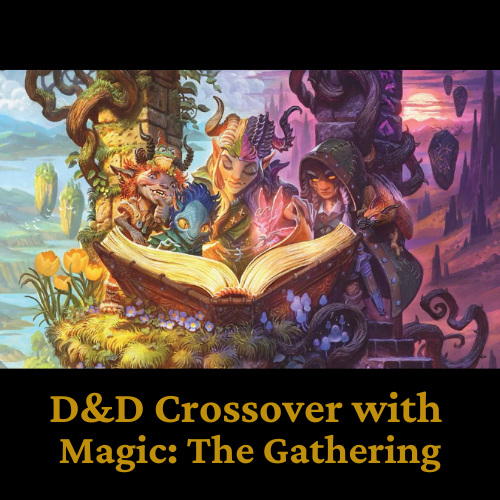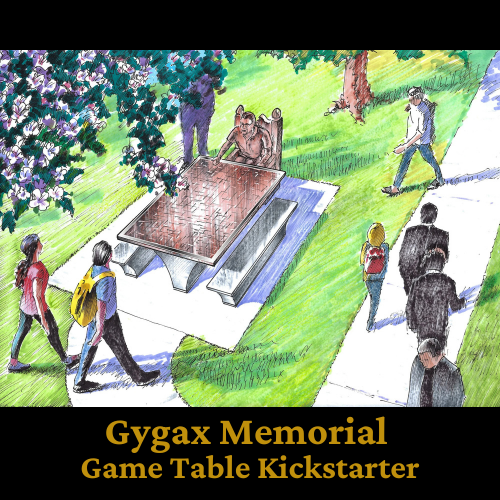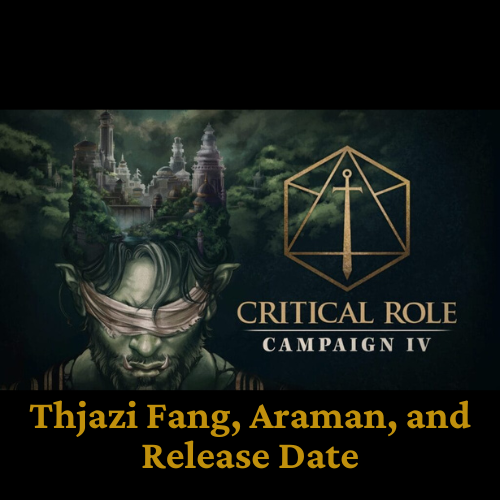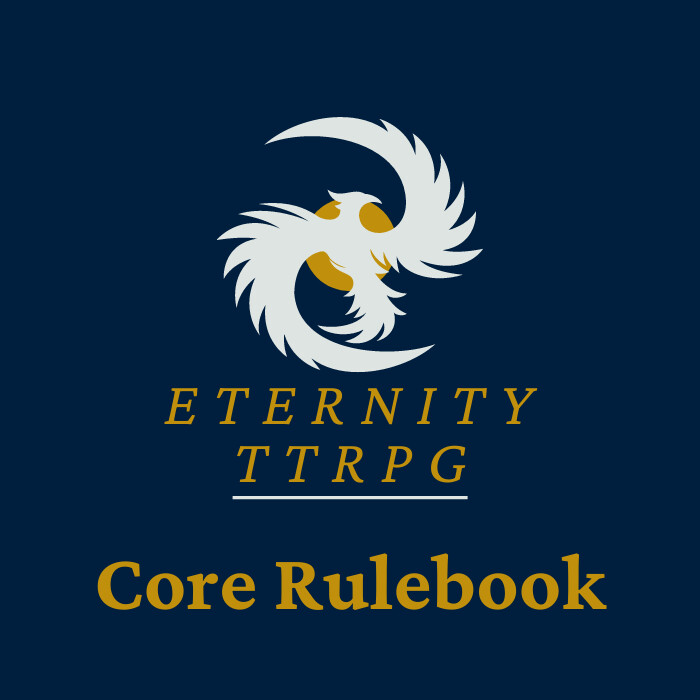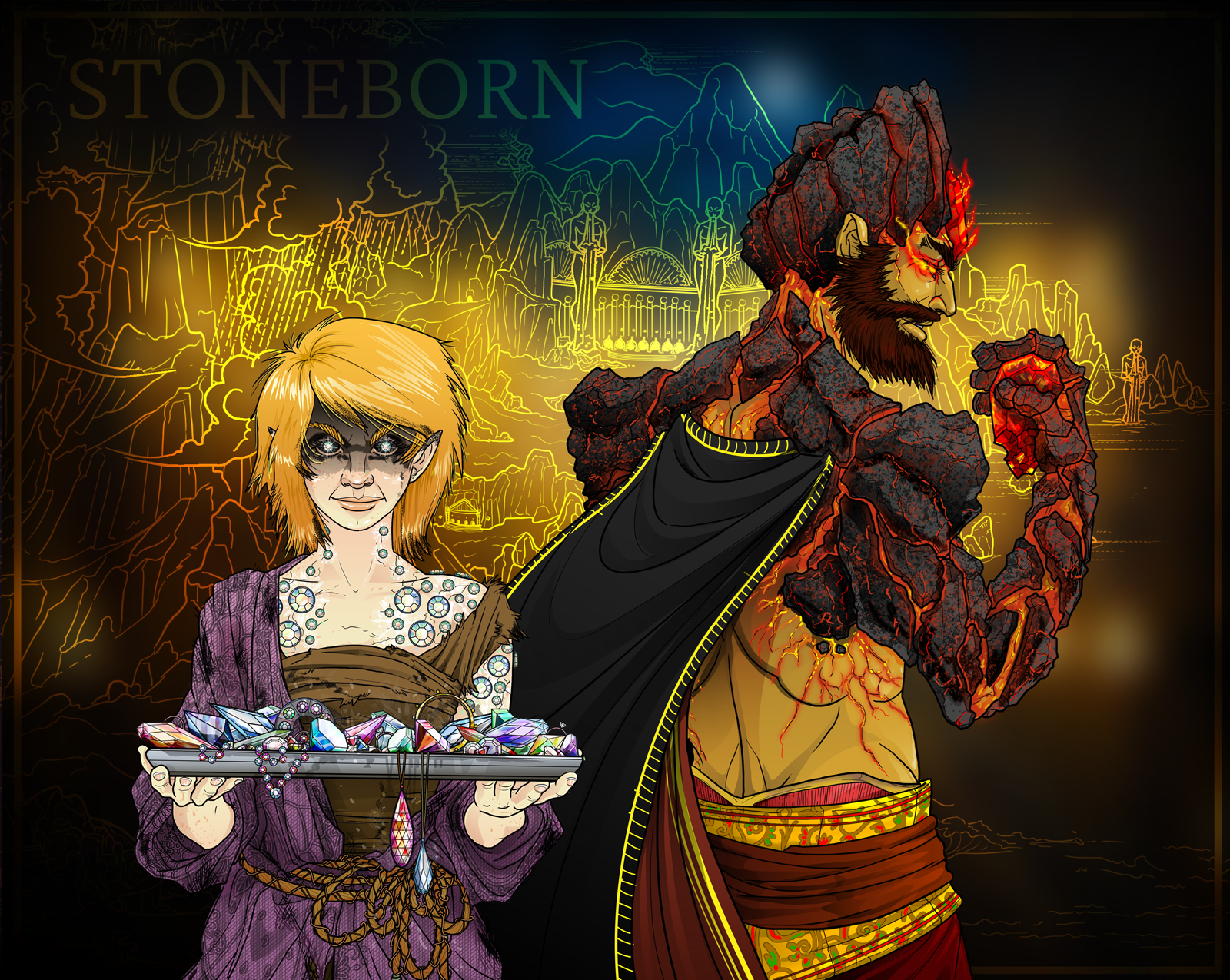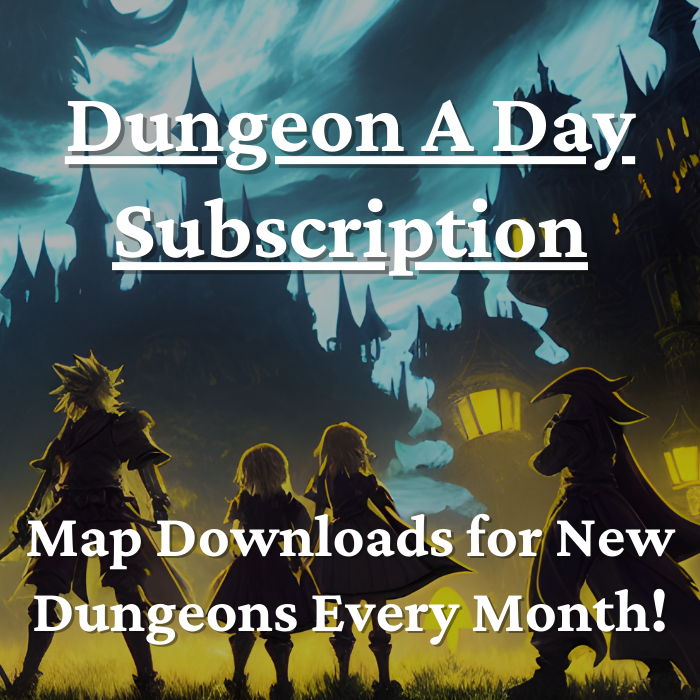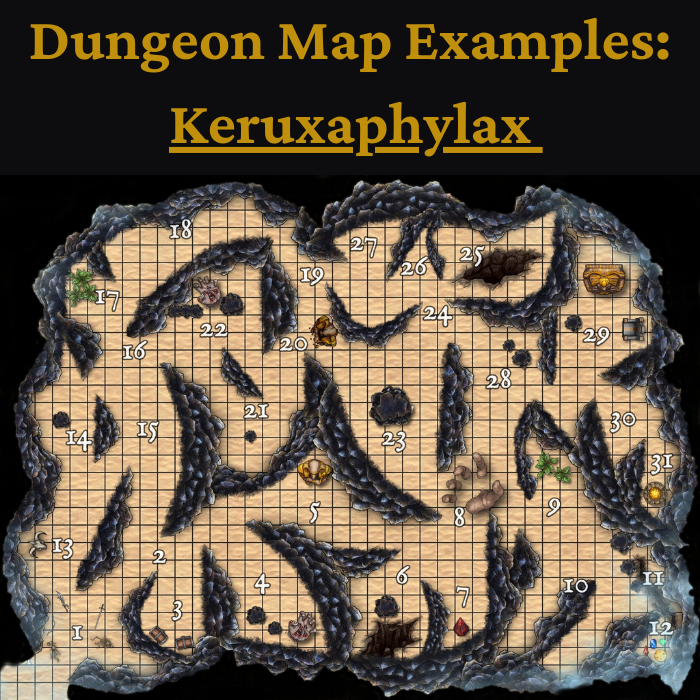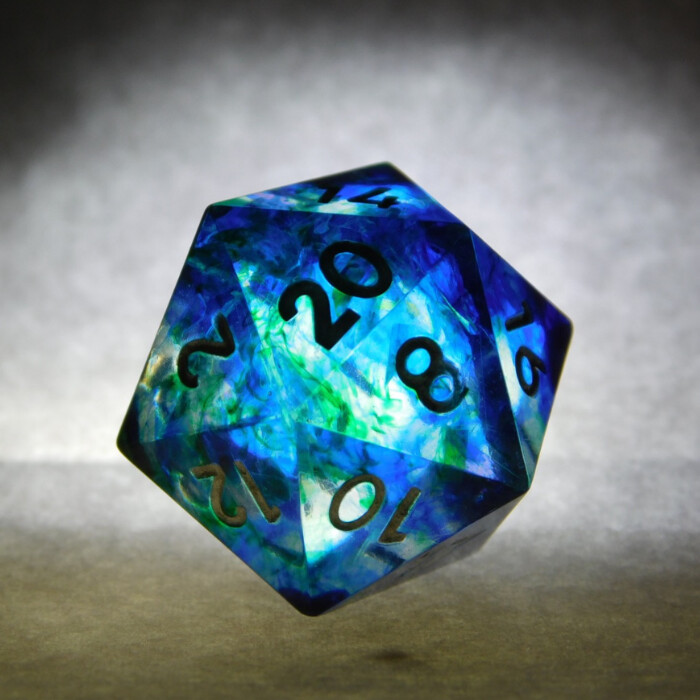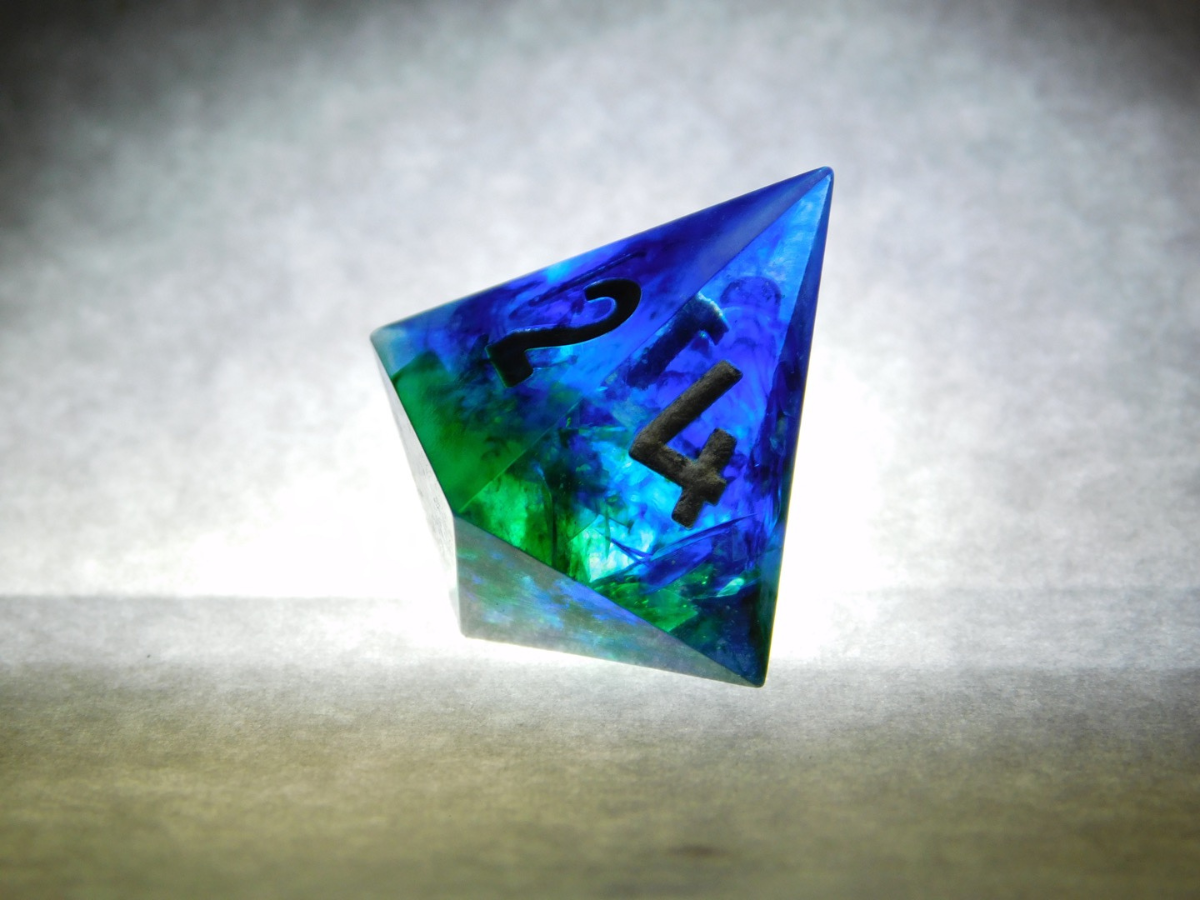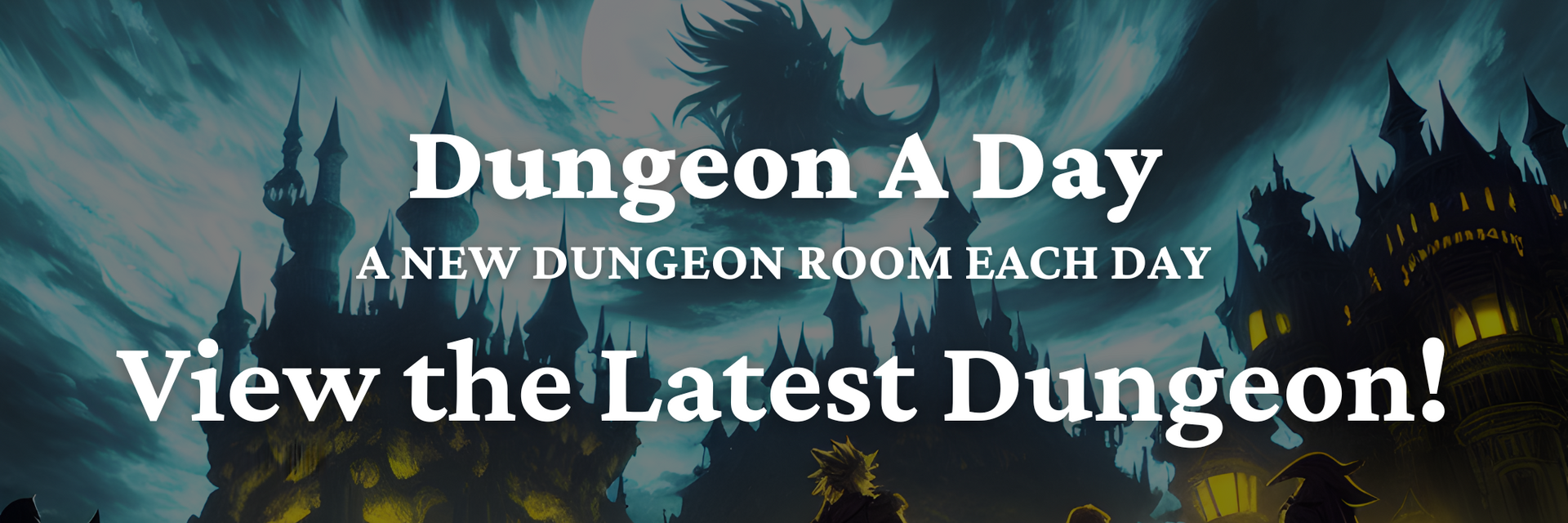6 Full-Length DnD Campaign Ideas for Your Next Ongoing Adventure
Interested in unique and fun D&D campaign ideas for your next epic set of adventures? I've got you covered with 3 full-length ideas that you can take and run as-is, or use as a starting place to get your creativity rolling.
These D&D campaign ideas are not paragraph-long reads. No. Each of these ideas is nearly 3,000 words in length, providing you enough in-depth material to build an entire D&D campaign. So, I hope you're ready for some reading! I hope that you find something in this article that you can add to your next game.
It's worth noting, however, that since they are ideas for entire D&D campaigns, even at nearly 3,000 words each, they still cover just enough information to help you fill in the gaps. That being said, you'll still have to do some prep work to make these ideas fly. If you do though, you should have at least 20-30 gaming sessions for your group, if not more, from each of these D&D campaign ideas.
If you're still not 100% sure how utilize all of these great campaign ideas for your own game, take a look at my article on How to Start a DnD Campaign, which should fill in any gaps for you.
Uncovering the Ancient Kingstones
- Discover powerful artifacts made by the gods
- Unlock other planes of existence and magical lands
- Face terrible elemental powers
7 Pools of the Necromantic Being
- This is the "origin story" of necromancy
- Fight hordes of undead and their lich masters
- Dive deep underground to stop an ancient evil
Bloodlines of Power
- The party gains mysterious abilities
- Ominous "Bloodlines" appear, calling for war
- End the 1,000-year cycle of arcane power
D&D Creative Campaign Ideas
- Lords of the Realm
- A Lineage of Characters
- Multiple Characters Per Player
Some of these D&D campaign ideas are best used as entire campaigns, while others are best used as pieces in your own
pre-made or custom-build campaigns. Adjust them as needed to your particular story or series of adventures. You can also use these campaigns specifically with D&D, of course, or really with any TTRPG of your choice.
If you love these DnD campaign ideas but want something that's a shorter read and easier to implement into a single session, take a look at 20 Amazing DnD Quest Ideas and DnD Side Quests or the Ultimate Free DnD One Shots Guide. Finally, before getting started, if you don't have one already, I highly recommend that you get yourself a campaign journal to track all the important notes for your ongoing adventures.
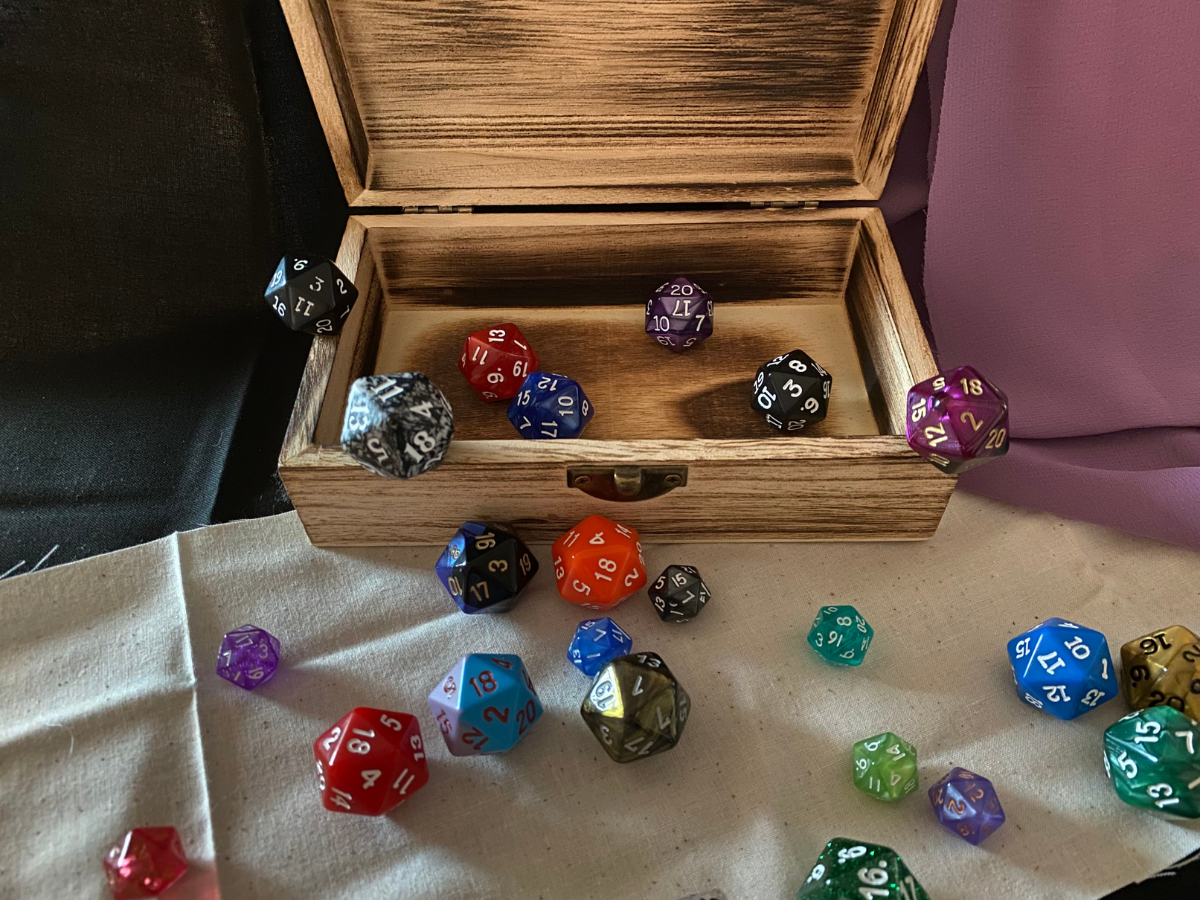
D&D Campaign Ideas: Uncovering the Ancient Kingstones
Thousands of years ago, the gods forged the “Kingstones." These artifacts allow their holder to travel to the various realms of existence by opening otherwise-hidden arcane doorways. The various realms of existence are other “worlds,” often inhabited and forged by primal elemental beings. Within such realms, adventurers may find powerful artifacts created at the beginning of the world, answers to age-old mysteries, and even entire lands that can be conquered or ruled. No one knows exactly how many kingstones exist.
1. Campaign Hook – Kingstone News, or Finding a Kingstone
The uncovering of all kingstones is - clearly - meant to be achieved at the end of the campaign, for high-level characters. However, news of the kingstones and the lore behind them should be presented to the PCs right away by a high-level wizard or someone else of substantial status. In effect, you're providing the characters with a clear goal of what the campaign will be "about," though it's going to take many twists along the way.
If you’re really interested in the idea of the kingstones and think your players might be as well, you can, alternatively, start the campaign by allowing them to “find” one in a sort of mundane way that may not suggest the item’s power. For instance, whatever job one of the players usually performs in their daily life (blacksmithing, acting as a guard, etc.), they could simply find the kingstone while “at work,” and it could be half-covered in mud or something. Make the kingstone appear sort of worthless, but still interesting enough to hold onto it.
2. Intro Adventure – The Local Lord
Whether the players heard about the power and glory of the kingstones from a trusted advisor, or “found” one without realizing its value, the first adventure takes off when an armed group of soldiers finds the adventuring group, in search of kingstones. The local lord knows a little about the stones, and has hired warriors to gather them.
If the party has heard of the kingstones or wants some extra money, the band of warriors are looking for more hands to help in their search. If, however, the warriors discover that one of the adventurers holds a kingstone, they’ll offer to pay for it. The amount is handsom enough to make the deal worthwhile, but not so much so as to arouse too much suspicion in case the party does not understand the stone’s true worth. If the party refuses, the warriors will attempt to take the stone by force, though they will not kill the party. All they want is the stone, after all, not "too much" trouble.
Whatever route you go with this first adventure, you should aim to:
- Tip the party off to the value of the kingstones.
- Show the party that the campaign is going to be about these vastly powerful artifacts.
- Include some degree of danger in acquiring the stones, either by fighting the warriors or joining them to search local caves/ dungeon where they’re rumored to be found.
- Show that people in this campaign are willing to betray others in order to acquire kingstones.
3. Rising Action – Developing Player Attachment to Kingstones
As the story develops, the party comes to learn just how many kingstones still remain in existence. The local lord from the intro adventure either comes to be a great ally and quest-giver to the party, rewarding them with each newly-acquired stone. Or, that same lord becomes the group’s first enemy, as the groups compete to acquire the kingstones before the other.
As the story develops, do your best to increase the players’ ties to the kingstones. Here are some ideas to help:
- Do the players want power?
- How about wealth?
- Do they want to rule lands in the future?
- Did one of their ancestors seek the kingstones, only to fail?
- Are the kingstones also sought by the paladin order, wizard's tower, or assassin's guild the player belongs to?
As player ties and interest to the kingstones develops, they’ll begin to see collecting them (and learning to use them) as their main priority for the campaign. The more resistance you throw in the way of acquiring the stones, the more the group will want them.
Quick Tip: Get Yourself a Campaign Journal
As a quick aside, if you're going to run any ongoing DnD campaign, I highly recommend that you purchase a campaign journal for yourself. I can't overstate the important of keeping great notes for yourself, especially when you're running a quest or series of adventures that's going to last more than a few game sessions.
Check out this awesome campaign journal on Amazon. Really, you can use any notebook, or even a word doc. on your computer. But I love to run games out of decorative journals like this because I feel that it adds to the game's mystique. When sitting down at the gaming table, I want my group to really "feel" the adventure that's unfolding, and anything with dragon or fantasy aesthetics really helps with that. If you end up getting this or something like it, enjoy!
4. Quests to Overcome the Challenges of Collecting/ Using the Kingstones
Basically, there are difficulties to acquiring kingstones that generate rising action:
- They’re hard to acquire. Lots of people want them, especially as word gets out. Powerful organizations may even already hold them.
- They’re hard to find, in general.
- No one really knows how to use them.
- If these really are ancient artifacts, why is everyone suddenly searching for them now?
The players should be able to find answers to these questions by going on quests into ancient dungeons, ruins, by finding magical tomes, or even by seeking answers from deities. Each problem above should take at least one gaming session to overcome, but realistically could stretch into a dozen or so sessions in total.
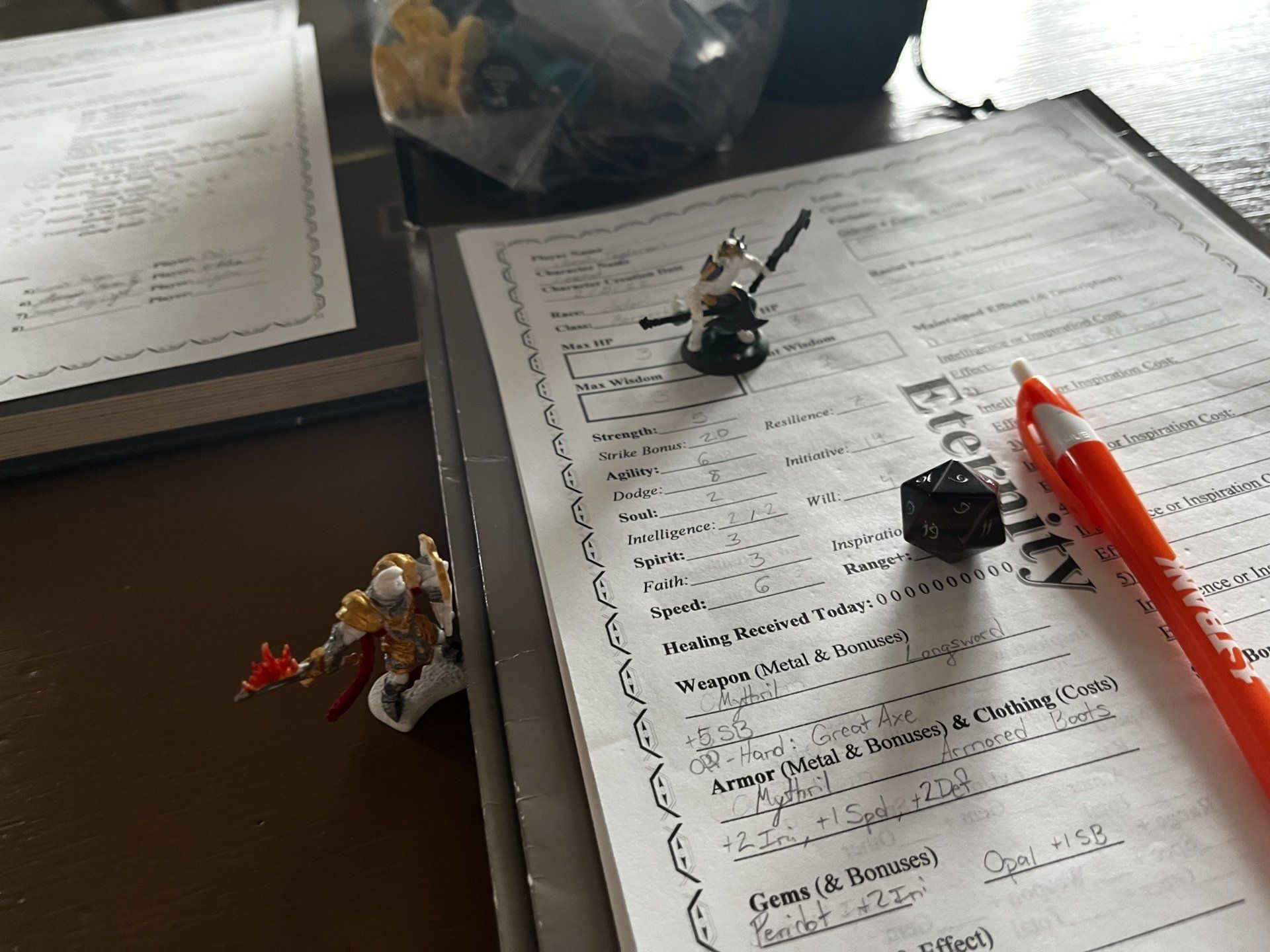
5. False Summit – Things Aren’t as they Seem
At some point along the journey of seeking answers to the questions above, the party will find at least one kingstone for themselves, along with answers on how to use the stone. When they apply the answers they’ve found, however, they realize that things aren’t quite as they seem.
Kingstones can in fact be used to travel to other realms, and do provide access to immeasurable treasures. The catch is that kingstones have a will of their own. This will inside each stone is an elemental being who inhabits it.
6. True Nature of the Kingstones
When the kingstones were originally forged, they were made by infusing the spirit of a powerful elemental into the crystal stone. The crystals cannot speak or telepathically communicate, but they have “awakened” over time, which explains why they’ve suddenly began appearing. Basically, these stones want to be found.
The kingstones are also, in fact, locks that prevent other elemental beings from entering into the mortal realm. The kingstones aren’t doorways. Instead, they prevent dangerous doorways from being opened.
As the kingstones “awaken,” and the elemental spirits within once again become conscious, they want those that hold them to open the locks. That way, these bound elemental spirits can return to the elemental planes from which they were taken when the gods made the stones. Also, their elemental brethren can then enter the mortal realm.
When the players “unlock” the kingstone(s) after discovering how to do so (which should involve a magical ritual), they are prevented from entering into whichever realm(s) they desired by a powerful elemental who instead enters into the mortal realm.
If the players use the magical ritual to unlock multiple kingstones at a time, they open one doorway for each. Thus, more success in the early part of the campaign actually creates more problems for the players at this stage in the adventure.
Taking Your Campaign Elsewhere?
If you run your campaign from a friend's house or at a local gaming store, this bag can save you from carrying a backpack, a plastic tub of terrain and minis, your dice bag, your gaming books, and even your laptop. Honestly, even if you run your game out of your own home, having a bag like this allows you to keep everything for your game all in one place.
As an experienced dungeon master, I know how many tools and trinkets you probably bring to your game sessions. If you're like me, you probably find that it's often the small details that really make your game come alive and that keep your players coming back. Gift yourself something that will make a huge difference in your ongoing campaigns with this top-end DM bag.
7. The Various Kingstones and What they Unlock
Each kingstone is slightly different.
Lava Core Kingstone: a gleaming red stone, hot to the touch, that appears to have lava flowing within. Unlocking this stone opens the doorway to the elemental plane of fire. Once opened, a fire elemental appears, blocking the doorway. So long as the doorway remains open, increasing numbers of fire elementals pour through, lighting fire to mortal settlements and causing mayhem.
Glacial Core Kingstone: a stone that appears and feels to be made of liquid in the sunlight, but that retains its shape. During night time, the stone solidifies into a never-melting chunk of ice. Unlocking this stone opens the doorway to the elemental plane of water. Once opened, a water elemental appears, blocking the doorway. So long as the doorway remains open, increasing numbers of water elementals pour through, flooding the countryside and freezing over mortal settlements.
Zanar Core Kingstone: a “stone” that actually appears to be more of an outline than anything, with the center part of it being partially invisible. In the “center” of the stone is a swirling mass of wind. Unlocking this stone opens the doorway to the elemental plane of air. Once opened, an air elemental appears, blocking the doorway. So long as the doorway remains open, increasing numbers of air elementals pour through, causing tornadoes and storms around mortal settlements.
Terra Core Kingstone: a “rock” that continually grows moss over it, and pulsates with green, life-like energies. Unlocking this stone opens the doorway to the elemental plane of earth. Once opened, an earth elemental appears, blocking the doorway. So long as the doorway remains open, increasing numbers of earth elementals pour through, causing earthquakes and overgrowth around mortal settlements.
Mystic Kingstone: this “stone” cannot be held, as it has no physical structure. Instead, it can only be “held” by a wizard, who controls the swirling mists of blue-ish arcane powers. Unlocking this stone opens the doorway to the elemental plane of magic. Once opened, an arcane elemental appears, blocking the doorway. So long as the doorway remains open, increasing numbers of arcane elementals pour through, attacking mortal settlements, and distorting the way magic is used in the mortal realm.
Shadow Kingstone: this “stone” cannot be held, as it has no physical structure. Instead, it can only be “held” by a wizard, who controls what appears to be only a 2-dimensional shadow. Unlocking this stone opens the doorway to the elemental plane of shadow. Once opened, a shadow elemental appears, blocking the doorway. So long as the doorway remains open, increasing numbers of shadow elementals pour through, blocking all light, and causing terror to mortal settlements.
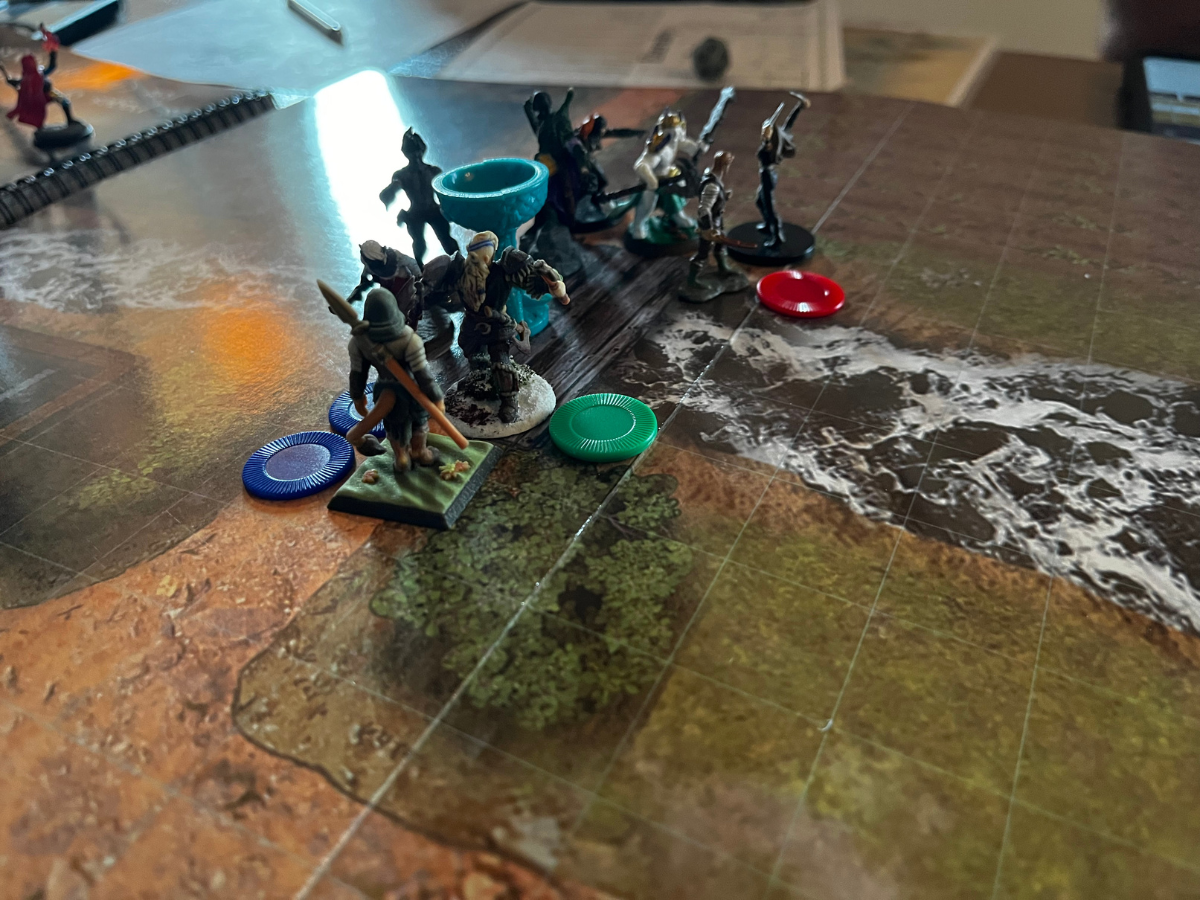
8. More Rising Action – Defending the Mortal Realm and Entering into the Elements
Obviously, at this point, the players are faced with a large dilemma. They not only have to fight for their lives after opening the doorway, but they now face the prospects of leaving doorways open to elementals coming in. They must choose to either close the doorways, focus on stopping incoming elementals, or continue pursuing their original goals of exploring elemental realms. In any case, the stakes have increased.
If the players choose to leave doorways open, elementals will devastate the local landscape and all who live there, over time. The elementals won’t venture too far from the portals (yet), but untold damage will ensue.
If, or when, the party decides to enter into the elemental planes, they will find that the environment - no matter which plane they go to - is entirely inhospitable. Mortals can only survive in the elemental planes with strong magical help. They do, however, find that the promises that they came to expect about the elemental planes are all true, and that powerful artifacts, vast wealth, answers to age-old mysteries, and more are all to be found.
The next series of adventures should focus on closing the elemental doorways, or at least preventing elementals from coming through (if the players care about the mortal realm at all). They should also focus on acquiring elemental artifacts and powers that the players have wanted all campaign. There should, additionally, be long dungeons to go through, as well as powerful enemies to face, who actually wield the objects, have the answers, etc.
9. Climax – Awakening of the Elemental Kings/ Queens
Once they players acquire all that they’ve wanted within the elemental realms (which could take 10 sessions or more) and they’ve stopped elementals from flooding through the doorways, they realize that the kingstones are now “fully awakening.”
In my experience, once the players unlock the kingstones, they often tend to forget about them, in a sense. They may come to think of the kingstones as simply a key to a portal, and nothing else. They may not consider the fact that the kingstone awakening is a continual process, and that opening the doorway to an elemental plane was not the end of their transformation.
10. Why They're Called Kingstones
The kingstones are called kingstones because the gods actually put the kings of each elemental realm into stones (see ideas for what these elementals might be). Simple enough, right? Well, once the kingstones fully awaken, the king/ queen within the stone breaks free of their imprisonment within the stone. At this time, any kingstones that the party either hadn’t found or unlocked suddenly open portals to their corresponding elemental realms. At the same time, all kingstones - found or not, unlocked or not - release the elemental king/ queen within the stone, each of which is a vastly powerful elemental being, set on destroying the mortal realm.
The kings/ queens rally all elementals of their kind from any doorways not yet fully dealt with, and begin an all-out assault on the mortal realm. After being imprisoned for thousands of years, they want revenge, and they want to claim the mortal realm as part of their own elemental plane.
In this stage of the campaign, all hell breaks loose. Instantly, every nation is at war with the elementals. Some may try to side with the elementals in hope of gaining favor. You can decide if the elementals are accepting help, or if it’s all about total annihilation following the kings’/ queens’ long imprisonment.
11. Final Confrontations with the Kings/ Queens
At some point, every king/ queen must either be slain, re-imprisoned, bought off somehow, or otherwise stopped. Use your imagination for how to end this all-encompassing conflict, making a unique tie-off point for each individual king/ queen. If your party loves combat, make them kill every single one of the 6 kings/ queens. If, however, you don’t want your campaign to end in 6 large-scale boss battles, come up with a few ways for the players to deal with the kings/ queens without combat for every single one.
The best way to wrap up these final confrontations is to allow the players to make use of the magical artifacts, unique powers, and ancient knowledge they acquired within the elemental realms to seal away or help them destroy the kings/ queens. Play up all the effort they put into their grand quests, allow them to utilize their new stuff, and let them really shine in these final conflicts. The confrontations can be immensely difficult, but allow the players an edge for all their hard work up until now.
12. Ending the Campaign
Is any end to a campaign really ever the end? Well, at the conclusion to this campaign, the players are left with a devastated world. Even in the best of cases, where the original flow of elementals was stopped from all portals, the kings/ queens have still dealt near-immeasurable damage. Though the player’s characters have become very powerful at this stage, they may consider hanging up their adventuring career to instead begin a new life as lords and ladies of the realm, set on rebuilding peoples’ lives following the terrible wars. There are many options, and it's all up to your group.
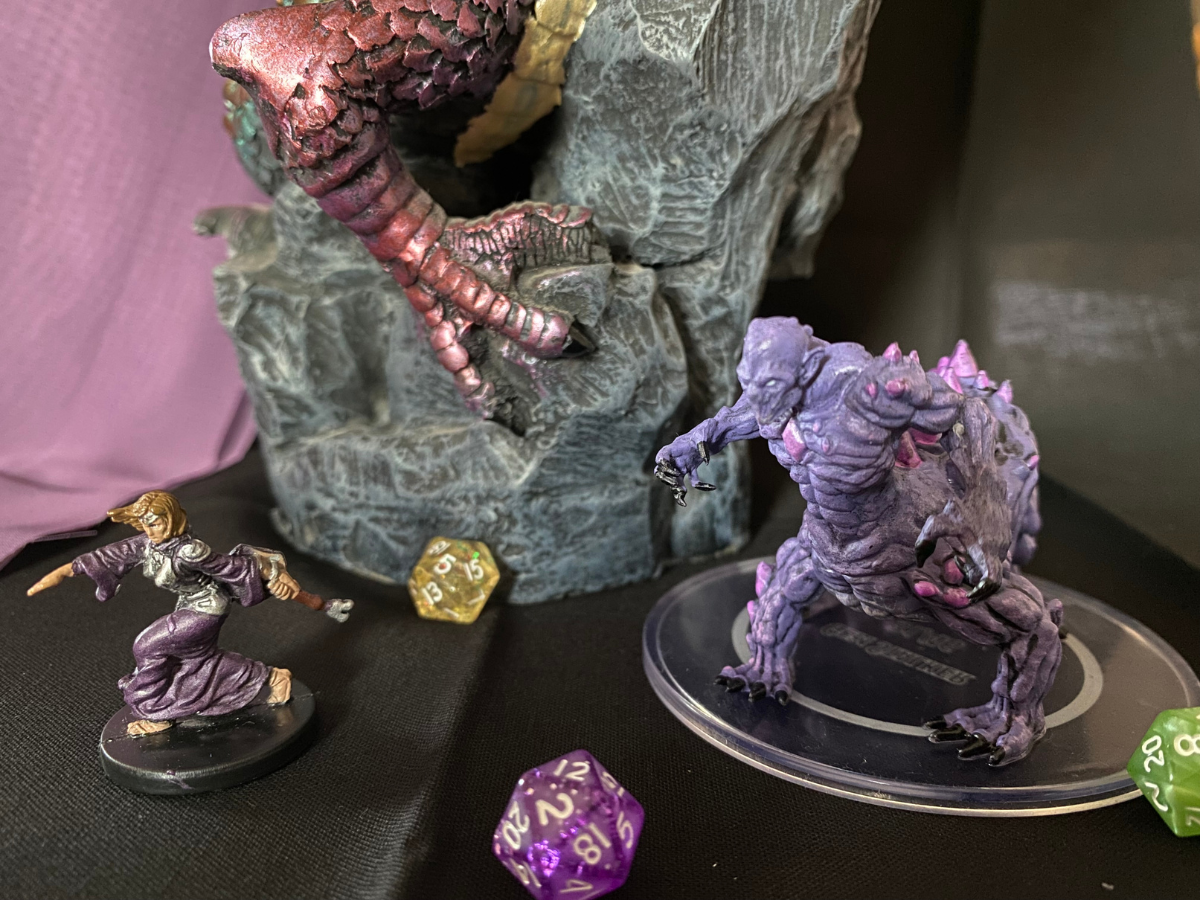
D&D Campaign Books
Before jumping into the other 2 full-length campaign ideas I have for you, I wanted to share a few of my favorite published D&D campaign books. These books are awesome, and if you haven't played them before, this shot list will help you pick what I think provide some of the best value in terms of gameplay and storytelling for what you spend.
If nothing else, you can use these campaign books as inspiration to mix and match with the other full-length campaign ideas I provide in this post, or you can simply take some inspiration from them into your own campaign designs.
Tomb of Annihilation Campaign Book
You're probably seen this campaign book at your local gaming store, as it's based on one of the most iconic and incredible D&D adventures of all time: the Tomb of Horrors. The Tomb of Horrors was widely viewed as both the most deadly and most difficult D&D dungeon of all time. It took players through the tomb of the evil lich Acecerak, where virtually every room had something that could one-shot a player or two.
If you're wondering, yes, I've run my gaming group through the Tomb of Horrors. Of course - I mean, as a D&D enthusiast, it is an absolute must to experience. Now, the Tomb of Annihilation is available for you, and it's both an updated version for D&D 5e, but also basically an entire campaign. Players start out on their adventure well in advance of the actual tomb, and face off against many dangerous encounters along the way, which still culminates with a terrifying battle against the campaign's famous lich. I highly recommend.
Tyranny of Dragons Campaign Book
You may have read other posts of mine that talk about what a great adventure the "Hoard of the Dragon Queen" can be, and how I use it in my own games for inspiration pretty often. Well, this Tyranny of Dragons campaign book is actually a combined campaign that features both the "Hoard of the Dragon Queen" and "The Rise of Tiamat," altogether. Best of all, this campaign book is roughly the same price as any other published D&D 5e book, just with double the adventure material.
The 5-headed dragon Tiamat is - I would say - almost on the same level of fame as the dreaded lich Acecerak from the Tomb of Horrors. It's an incredibly powerful beast that every D&D group has to have the experience of slaying. If you're a true D&D enthusiast, I definitely recommend this campaign as a way to round out your overall gaming experience.
Storm King's Thunder Campaign Book
The Storm King's Thunder is another one of D&D 5th edition's iconic campaign books. I don't know if you've ever had the pleasure of playing Majesty: the Fantasy Kingdom Sim, but in that old school but delightful computer game - in the first version - one of the last missions had you survive with your kingdom against 7-waves of enemies. They were really strong enemies, and would occasionally show up in your realm from all sides, to terrorize and destroy everything you had created.
Well, the Storm King's Thunder loosely reminds me of that scenario, which I loved so much as a kid. In this adventure, the players are a bit more active at thwarting the awakening giant's plans, but maybe you could still throw in some impromptu giant waves attacking villages, of your own. That's what I'd do, anyway!
D&D Campaign Ideas: 7 Pools of the Necromantic Being
Ok, now back to the D&D campaign ideas I've custom-created for you myself, from the campaign's I've run for my own group in the past.
Long ago, a god was slain. Or at least, the warriors that fought him had thought that they had killed him. He was known to some as the holy god, Vesth, but to those who had killed him, he was called Elmran, the Corrupted. In their eyes, a holy god was only holy to those he favored.
Unfortunately, a god is difficult to kill. And many eras after his “death,” a piece of Vesth re-animated within the caverns of Mount Cyrum. In order to save himself, he had to utilize magic in a way that it never had been used before. His holy powers weakened so, it was all he could do to give himself life again. This is the story of how necromantic magic, along with the rebirth of an old god, came to be.
You should note that this RPG campaign is really unlike any other you've probably ever played. The reason is that by the end of this campaign, if you use this idea as-written, the heroes do not achieve victory. Instead, they only serve to bolster the undead forces of the Necromantic Being.
1. Campaign Hook – The Destruction of Cyrum
At the start of this campaign, no one has ever heard of an “undead” before. There simply is no such thing as walking skeletons, zombies, vampires, lich, or anything else related. Therefore, when the small, peaceful mountain town of Cyrum is suddenly overrun by undead of all kinds, it comes as a complete shock. The village of Cyrum quickly becomes a battle zone where many perish. The town is also quickly lost.
The players are then thrown immediately into a world of undead, based in the typical fantasy setting of DnD. Player characters do not understand why the dead are suddenly coming back to life, what may have caused such a tragedy, or even how there are so many. After all, Cyrum was a small town, with but a small population and graveyard.
The village elders call a meeting, and with unanimous vote, agree that all villages nearby must be warned, armed, and gathered in opposition to the looming threat.
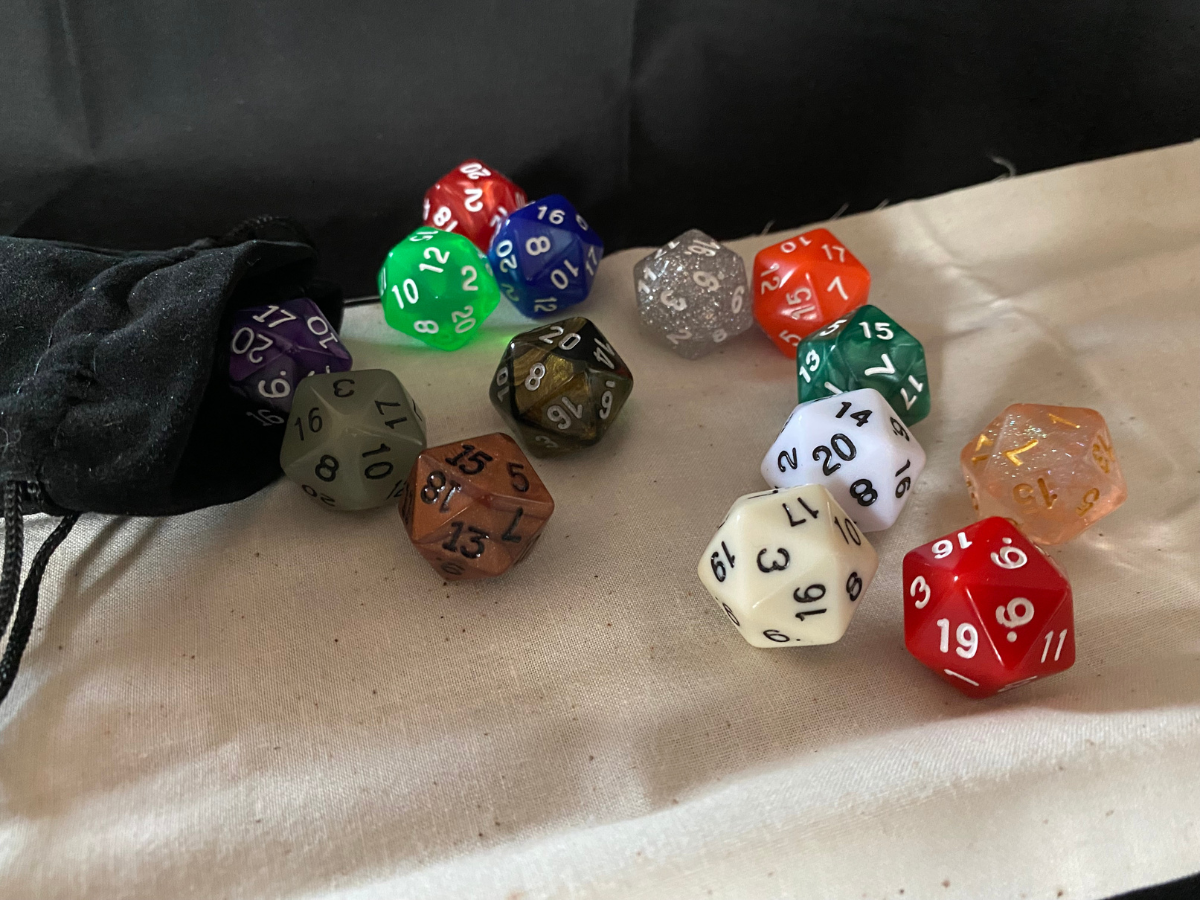
Just an example of the number of d20's you'll need when attacking your party with the undead horde in Cyrum.
2. Intro Adventure – Terror of the Undead
The adventuring group is called to join the resistance against the horde of risen dead. Every living body is needed in the task. The village elders from Cyrum (who survived) are concerned that the destruction of Cyrum is not the end, and that all nearby towns, or perhaps all of the world, is in danger. They fear also that some terrible magical presence has taken hold in the mountain next to Cyrum, and is driving undead from ages past to the surface. So, who knows how powerful such a being could be, or how many forgotten graveyards could be within the mountain?
You can task the players in the intro adventure with any or all of the following:
- Warning nearby towns
- Aiding escaped Cyrum villagers
- Helping to build a resistance force
- Actively striking back into the waves undead now wandering at the edges of Cyrum
Throughout the adventure, the following facts should also be stressed to the group:
- Things look very bleak.
- Even with all of the nearby villages united there probably isn’t much hope.
- Dark magic is almost certainly at play.Terror strikes these normal villagers at even the thought of an undead.
- Many people are either talking about, or actively setting out in search of different lands.
Cyrum is a small town, so the party members should have a reason to be here in the first place. For example, no one really just travels to Cyrum for no reason. It’s a mountain town that’s very hard to reach, very small (perhaps a couple hundred people), and that very few people from the broader world would even know about. So, the impact of recent events to each party member should be related to their character’s goals, backstory, or important people in their life, directly.
3. Rising Action – The Resistance
Remember that in this setting, no one knows anything about undead. Since no one’s ever fought undead before, it’s not widely known that typical undead are often very weak, even when compared to the typical fighter that a village could produce.
As events develop, however, the local villages band together to retake Cyrum. Obviously, this is not an easy task, despite the relative weakness of individual undead. Though Cyrum is literally built near the peak of the Talon Mountain range, and the main bulk of undead appeared there, many other streams of undead have appeared around other villages. Basically, everyone has their own problems to deal with in addition to their commitment to stem the main tide. There are also far superior numbers on the side of the undead.
As the story develops around the retaking of Cyrum, the already-close ties that the player characters have to what is possibly their homeland (or at least the homeland of a dear friend of theirs, etc.) becomes pressed as tragedy ensues:
- A family member, perhaps even sibling, dies in the assault of Cyrum’s main gates.
- A close, childhood friend gets cut off from the main force and himself becomes an undead.
- A beloved mentor grows ill and perishes from lack of proper nutrition and clean water due to a lack of supplies.
- Nightmares begin haunting one of the players of an ancient evil deep in the mountain.
One of the greatest (and most terrifying) anomalies of raiding Cyrum and the risen dead is that some (but not all) of those that perish fighting are raised back to life as undead. Warriors are then forced to again slay their fallen comrades, hoping that their own fates won't be as gruesome.
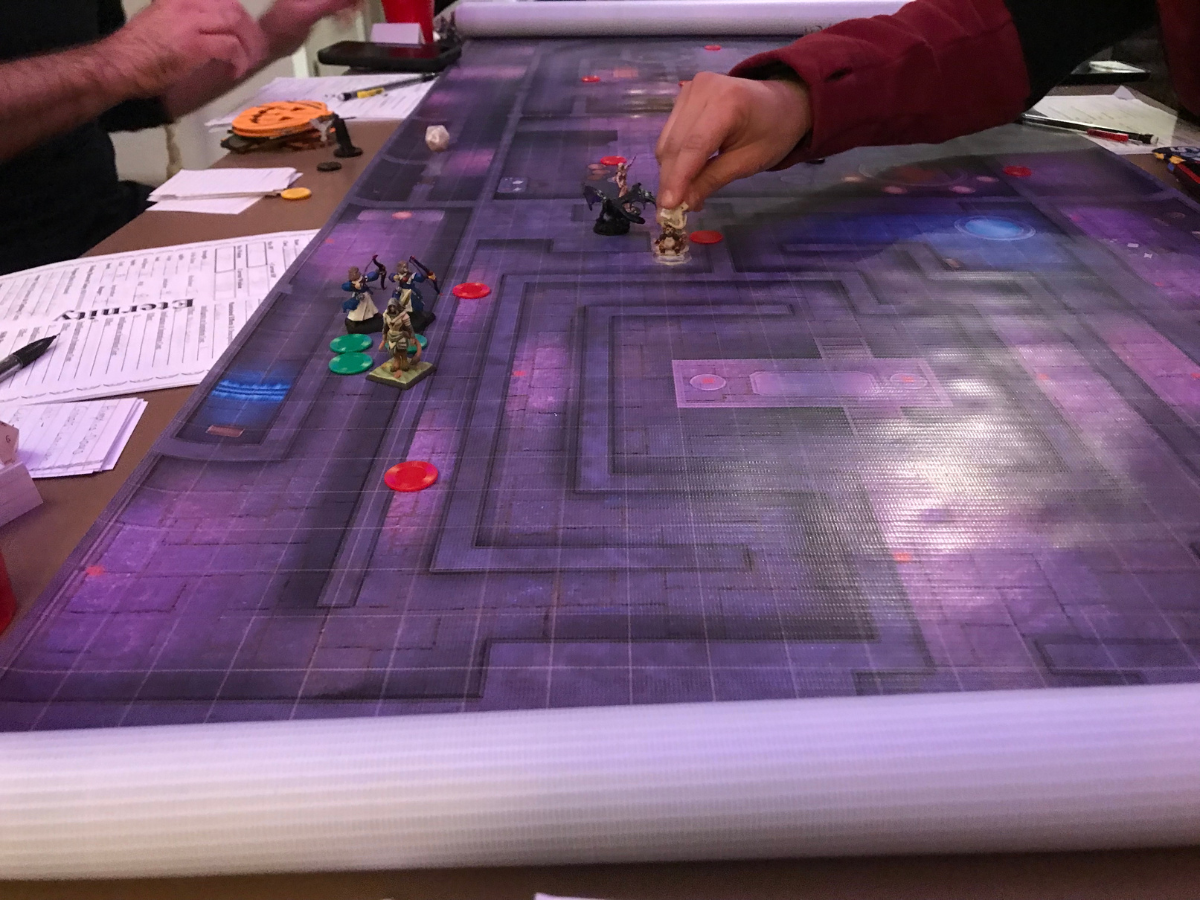
4. The Retaking of Cyrum
In order to retake Cyrum, characters need to accomplish the following tasks, which can each form the foundation for an entire gaming session (or more):
- Convince the disparate villages to band together, despite that fact that each is under siege by their own (smaller) force of undead.
- To make the main task of retaking Cyrum more feasible, stem the tide of each smaller wave of undead hitting the other villages.
- Figure out if there are specific ways to kill each type of undead. For example, perhaps zombies can only die from being beheaded, vampires can only die with a stake/ sword through the heart, lich can only be killed with divine magic, and skeletons are resistant to any kind of piercing attack. This can make the near-endless line of battles in this campaign far more interesting, if you'd like.
- Create a battle strategy that utilizes terrain, time of day, and more to give an advantage against overwhelming numbers.
- Find a way to seal the main entrance – which is a large break in the mountain – against the undead.
- Defeat the lich of Cyrum, who the players discover near the middle of town, and seems to be more or less “leading” the undead horde.
5. False Summit – Cyrum is only the Beginning
The heroes retake Cyrum against overwhelming odds, superior numbers, and the powerful undead lich who seemed to be leading the horde. They also managed to seal the breach in the Talon Mountain peak through which the undead were coming out. All is well!
Actually, no. All is not well. At least not according the village elders. In general, people are worried that despite the recent victory, perhaps sealing off Talon Mountain was not enough. The general fear is that until more information is gathered and more action taken, there are no guarantees that the same tragedy wouldn’t happen again in the future.
6. The Darkness of Asa
The villagers are concerned about some powerful dark magic stirring up the souls of the dead to again, mindlessly inhabit their bodies. They’re right about that. However, what no one yet realizes is that the remains of Vesth, the long-dead god, have converged into 7 pools deep within the Talon Mountains. The 7 pools are literally 7 underground springs that contain the remains of Vesth, which has become concentrated dark magic. Vesth is only partially conscious, and the dark magic pouring out from the once-holy god is simply his effort to remain alive. He is using necromancy to reanimate himself.
The undead pouring out from deep within Mount Cyrum are the remains of the ancient and very large civilization known as Asa, which used to reside within the Talon Mountain range thousands of years ago. Vesth attacked the apostate kingdom of Asa and died there upon its very peak. However, except for the warriors who defeated him, the kingdom was largely destroyed, and the dead left where they lie. Now that Vesth is reawakening, his necromantic powers are raising those fallen warriors and civilians as undead beings.
There are many, many more undead yet to be raised, deep within the mountain. Until the 7 pools of the necromantic being are destroyed, the hordes of undead will never cease.
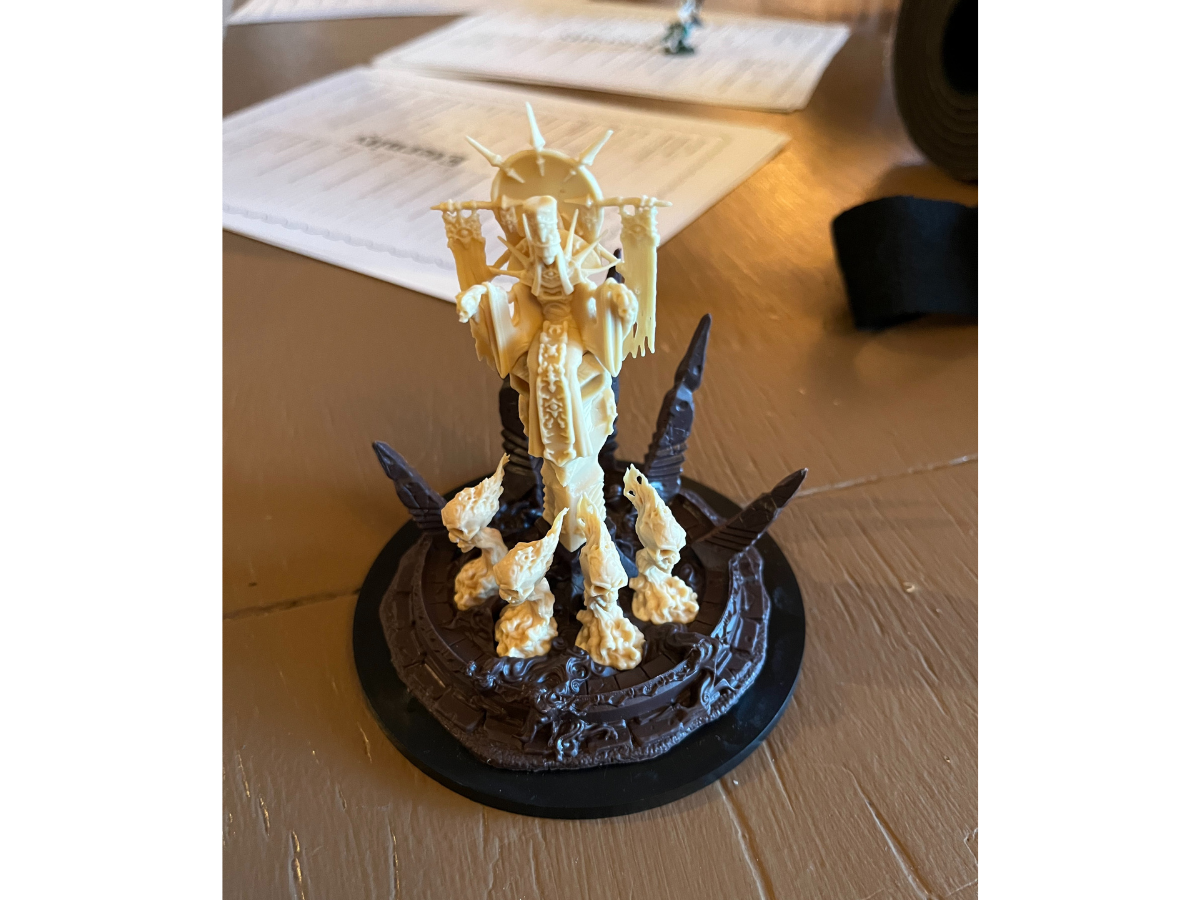
7. What Lies Within the Talon Mountains?
When Vesth’s necromantic magic touches what were once powerful magic-users from Asa, they reanimate as a lich. The lich are sentient, can organize hordes of undead, and act as lieutenants for the 7 Pools of the Necromantic Being. At this time, the 7 Pools and his lieutenants don’t really “want” anything, except to live again. However, some of the lich are powerful enough to break free from the 7 Pools and pursue their own goals.
Cennrietta: an up-and-coming mage of Asa at the time of its destruction at the hands of Vesth. Cennrietta was a child prodigy when it came to spellcasting, and was still only a teenager when death found her. Though she was talented, she was also young, and perished in obscurity. Raised as a lich, she is struggling to find a new purpose. She is entirely free from the control of the 7 Pools of the Necromantic Being. She seeks to find a place of importance among her new kind – the undead of Asa.
Gabronc: brother to Sabranth, Gabronc was one of Asa’s most powerful mages. He was a master at Asa’s arcane sanctum, where he taught the next generation of wizards. Gabronc cared for Sabranth, his own family, his students, and the ethical use of magic. He could not understand why Vesth would turn on his beloved lands, and tried all he could to save those that he loved. In undeath, Gabronc uses his magic as a lich to discern the fate of his family, of Sabranth, and to see how he can still benefit humanity.
Ilraid: the arch mage of Asa at the time of its destruction. Ilraid was very old at the time of his death, and very powerful. He fought with the warriors who killed Vesth, though was defeated before he saw the end to his nemesis. In undeath, the lich Ilraid seeks to destroy the 7 Pools of the Necromantic Being, though he wishes to first acquire the true power of necromancy for himself. In that way, he may have vengeance upon his greatest enemy, and yet still continue living as a lich.
Remnant: a child of the kingdom of Asa, at the time of its destruction. Remnant was the subject of dark magical experiments, and housed immense dark magical powers as a result. He became, in effect, a fallen paladin. It was in part due to these types of dark magical experiments that Asa wizards were conducting that led Vesth to judge the kingdom of Asa in the first place. Remnant does not remember who he is, but only that he at one time had loving parents. Even as a lich, he seeks to find adults who could love him and give him the childhood he never got to experience.
Sabranth: sister to Gabronc, Sabranth was one of Asa’s most powerful mages. Sabranth used her powers at the behest of Ilraid to experiment with dark magic. Promised limitless resources, wealth, fame, and more, Sabranth experimented on the child that came to be known as Remnant, infusing terrific power into his little body. Returned to life as a lich, she does not wish to see her brother Gabronc, fears Remant, hates Ilraid, and kills any living creature on-site, out of envy.
8. More Rising Action – Dungeon Delve, Cyrum’s Defense, Liches of the Talon Mountains
If the players take no action at this point, the legions of undead will only come back, but with greater numbers. Clearly, someone has to delve into the depths of the Talon Mountain range, discover what’s going on, and put a stop to the dark magic. The other problem is that the defense of Cyrum and its neighboring towns/ villages must also be given attention, just in case more undead pour through the breach while the party’s inside the mountain.
A new entrance must be carved into the mountain’s interior, through which the party can begin their cavernous delve. Meanwhile, the party must figure out how to provide for the villages’ defenses in their absence. This could be a situation where each player creates another character whose job becomes defense on the surface. This situation could also result in a series of adventures before the party even dives into the mountain, where they focus on creating defenses for various towns.
The main thing to remember is that at some point, the party is going to have to deal with each of the main liches mentioned above. Not all of those liches need to be defeated in combat (and several may not want to fight at all in the first place), but they do pose a substantial threat to Cyrum. If the party does not confront them within the caverns of the Talon Mountains, then they will eventually find their way to the surface, along with their undead servants.
9. Undead Legions
Throughout all of the adventures both on the surface and in the caverns of the Talon Mountains, the party will face legions of undead. They should barely ever get a break from their battles. It should be difficult for the party to gain ground, keep track of their location amidst mazelike tunnels, and difficult to rest or recover resources. In reality, the party will probably be underground for a month, or even months of in-game time. They may occasionally return to Cyrum for supplies, to upgrade their equipment, and to help with the continued fortification of local towns.
As the party levels, they’ll have to face off against the most powerful of the lich (mentioned above), along with their undead servants. They’ll have to either slay those liches or find a way to join forces (however that may be). During all of this time, the 7 Pools of the Necromantic Being, the lich, and the undead that surround them all grow in power.
With each mile marker attained within the caverns of the Talon Mountains, the party also learns more about the 7 Pools of the Necromantic Being:
- They learn that he was once known as Vesth, the holy god.
- He tried to punish the ancient kingdom of Asa.
- He is now reanimating himself as an undead.
- All undead come from this same power.
- Weapons and armor infused with divine powers have extra effect against undead.
- Resources for such weapons and armor could be outfitted to Cyrum and the surrounding villages to make an ongoing defense highly possible.
- In order to stop the undead, they have to deal with the 7 Pools.
10. Climax – The New Masters of Undeath
Once the players have fought with each of the major liches, or at least circumvented them in some way (which could easily take 3 sessions or more per lich), it’s time for the party to begin facing off against the 7 Pools of the Necromantic Being, directly.
You can, of course, take this campaign in any direction you’d like. Your players have likely poured in countless hours to roleplaying their characters, optimizing their builds, and developing an in-depth story. However, remember that the party is probably from Cyrum or nearby villages. That being the case, they are heroes, but they probably don’t have the power to kill the remains of a god. Cyrum is a very small town, after all, and what are the chances that multiple god-level heroes come from a place like that, all in one given time?
If the party has been using divine weapons and armor to cut through swaths of undead, they’ll also be shocked and dismayed when they combat the remains of Vesth, only to find that he is both immune to divine weapons, and that he and slices through divine armor with ease.
So, what are the players to do? Well, in this suggestion for the story, the party finds the 7 Pools, believes they have a chance to end Vesth for all time since he’s in a weakened state, and they attack. During the epic battle, they become trapped in the cavern where the 7 Pools reside, via hordes of undead. At that time, the players can’t escape, they fight valiantly to the last man, and eventually die. The reasoning is that even in his weakened state, Vesth is still a god, has a near-limitless health pool, and can’t be killed by the humble, yet heroic party from Cyrum.
Upon the heroes’ deaths (a true TPK DnD), they are however resurrected by the 7 Pools, given immense power as liches, and set to lead Vesth’s undead armies against the world. So, did the party really lose? Or did the campaign simply take a different turn from what they'd expected.
11. Ending the Campaign – An Invitation to a Necromantic Being Campaign Part 2
The end of this campaign is actually an invitation for a much larger continued campaign, where undead attack not only Cyrum, but the world at-large. Think of it like a "Campaign Part 2."
In this continued world, the village of Cyrum is the best-equipped to deal with the undead in all of the realms, thanks to the efforts of the original party. Cyrum has since forged the strongest divine weapons, the most enduring divine armor, and practice divine magic at the highest level. The small, backcountry village has become a bastion of hope for the world. Warriors, wizards, nobles, and commoners from the world over travel to Cyrum to train so that the powers of necromancy can be put to an end.
What of the players? Well, you can take them in one of two different directions:
- The players continue this campaign part 2 as the leaders of the undead legions, but in lich form. Their task becomes to destroy all who would harm the Necromantic Being, and defeat endless waves of would-be heroes. This campaign could end up as something like how Malin Keshar's story ends in the final stage of his story in Wesnoth.
- Alternatively, the party should create new characters. These new characters could be either the same level as their previous characters, or entirely fresh. The idea is that these are the characters who will ultimately stop the undead hordes. To do so, they'll defeat the original characters and free them from their lich forms. They'll then move on to destroy the 7 Pools of the Necromantic Being, forever. It is up to you, however, if they manage to destroy necromancy for all time, or if the dark magic has already spread too far and into too many wizard’s hands to be contained...
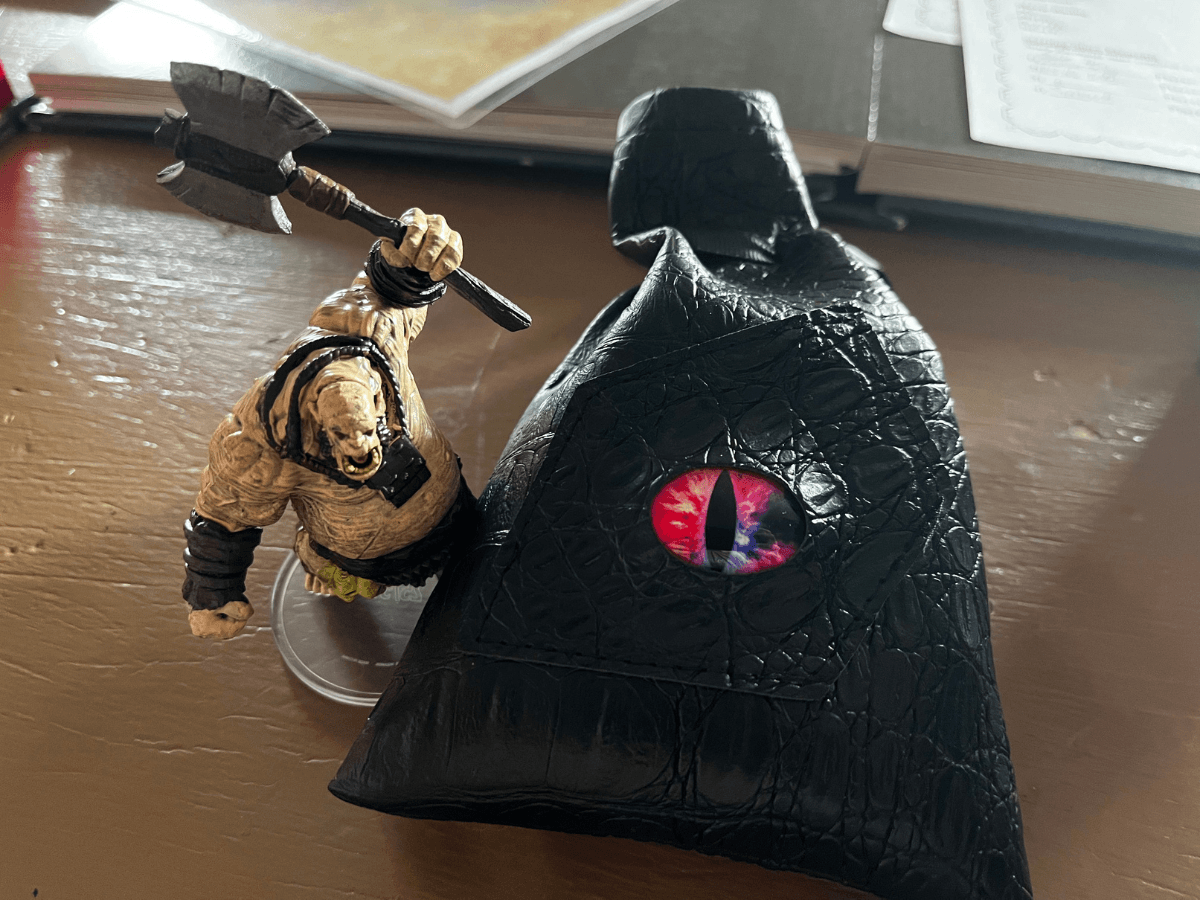
What if there was monstrous blood coursing through the players veins that gave them incredible abilities and unique magical effects?
DnD Campaign Ideas: Bloodlines of Power
If you’ve been playing DnD for some time, chances are high that you and your players have pretty much experienced just about every main race and class that the game has to offer. Part of what makes this campaign unique is that your players get to explore unique races and even classes that they never have before.
The “Bloodlines of Power” are the name given to a series of demi-god-like beings. These beings are the ones who created races such as the fey, celestials, beings of the void, giants, elementals, and even dragons. In their quest for dominion, they have infused their powers into mortal races, calling upon them to act as their warriors.
1. Campaign Hook – Unexpected Powers
Imagine a world where suddenly, normal people have uncommon “powers.” A village woman gains the strength of a giant. A young boy can fly. The village elder can turn invisible. It doesn’t all happen at once, but quiet murmurs of interesting powers turn into widely-known facts that no can ignore.
These powers are not “magic,” per-se, but rather spell-like powers granted to families through their bloodline. If one person can summon dark portals, so too can their parents or children, most likely. However, only 1/20 families seem to have a power of this kind. Still, that’s 5% of the population, which is plenty to cause a stir.
2. Intro Adventure – The Heroes have a "Bloodline"
Naturally, the player’s characters are all part of this 1/20 bloodline phenomenon. Their powers should awaken during normal quests or adventures. You can start the campaign with barely a whisper of what’s really happening. Probably, your players should think the campaign is headed in an entirely different direction as they go off to fight the typical goblin clan, or to protect a caravan from orcs, etc. Once the story seems to be pretty settled, you completely change it by inviting the players a racial power from any race in DnD that they'd like, along with a unique spell, ability, or feat entirely different to their current class.
Let your gaming group play around with their new powers. Have them interact with other amazed NPCs who both have similar gifts, and who do not. Take the players to town meetings, invitations to wizard’s guilds, and to requests for an audience from the king, to demonstrate their powers. Play up the bloodline effects.
The intro adventure should hit the following key points in order to set up the campaign properly:
- Start out very mundane. Not slow or boring, just very unique.
- Include whispers of unique powers that some random villagers seems to have.
- A party member gains powers, followed shortly by the rest of the party. Each gets to choose a unique racial power and is given some related spell, ability, or feat to complement the new “bloodline.”
- The uniqueness of these bloodlines gets played up at social gatherings.
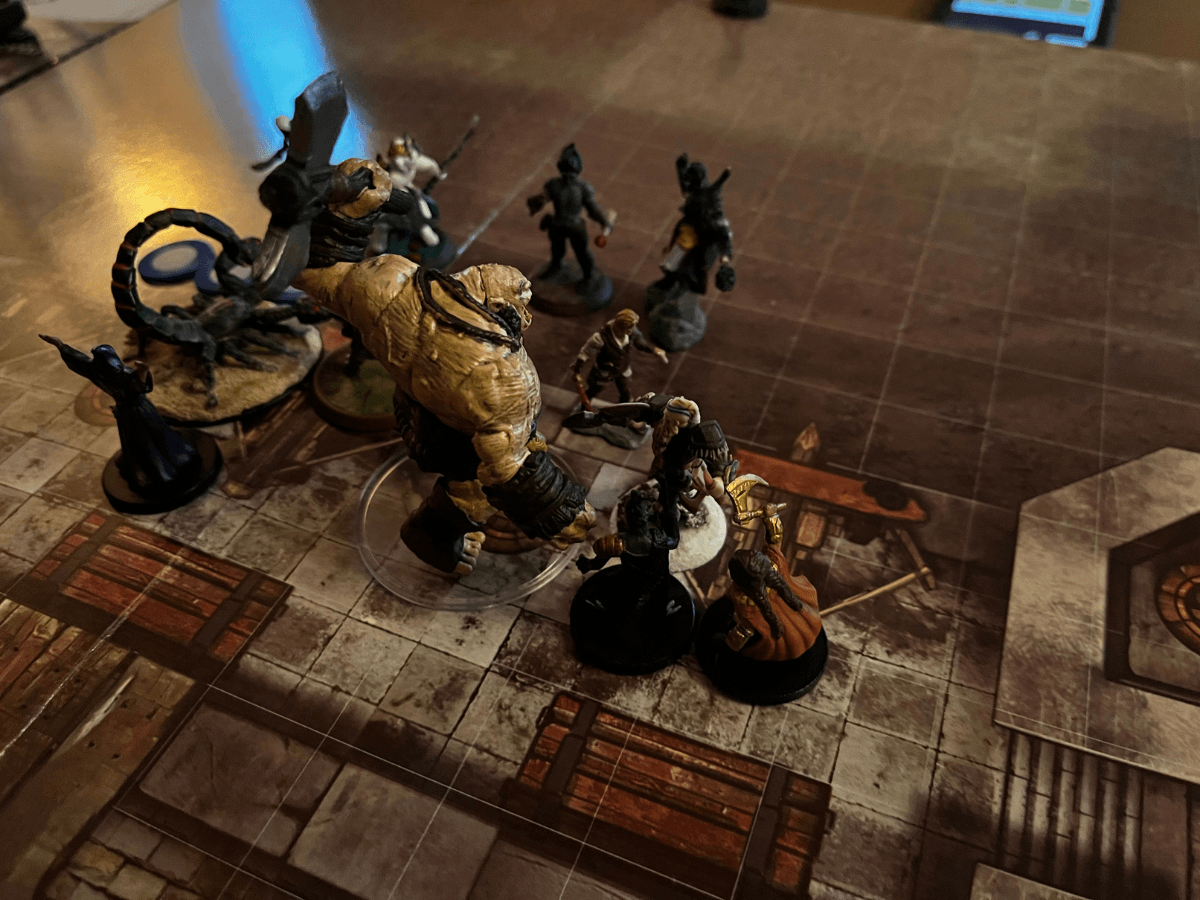
2. Rising Action – The Call to a New Life
The campaign takes a sudden leap forward into what things are really “about” when the “Bloodlines of Power” – the demi-gods who granted bloodline powers – suddenly emerge, stating their claim to the realm. They call upon all of their “loyal subjects” – that is, those to whom they each have gifted their bloodline powers – to join their cause.
- The bloodline powers were given as a gift, to show the rewards for following a “Bloodlines of Power.”
- Anyone who does not heed the call will not lose their bloodline power, though they will face punishment (likely, death) should that faction take control. This is obviously a large concern for anyone thinking of not heeding the call.
- Each of the “Bloodlines of Power” is a separate faction, and each is vying for dominance, so with rare exceptions, they do not work together.
- Each faction’s leader – the demi-god who granted their faction’s bloodline power – is calling their faction to gather in a unique location in the realm.
Of course, this event is both jarring and strange. Many people will not heed the call of their patron Bloodline. In other cases, families will split apart as one member leaves to join a “Bloodline of Power,” while the rest of their family stays. At this time, no one really understands what this is all about. However, kingdoms go on high alert as a small number of their subjects leave to join the unknown beings clearly bent on accumulating power.
As the story develops, kingdoms of the realm decide if they should declare war. It’s clear that the “Bloodlines of Power” want to take over. Many kingdoms fear, however, that other lands will side with the “Bloodlines,” and that declaring war prematurely could present a disadvantage when the first strike falls.
Wizards from all of the lands are also called to answer the question of: what exactly is going on with these “Bloodlines” and what powers can we expect to face if war does occur?
3. The Players’ Role
In this campaign, there are very large and powerful forces at work in the world, even while the player characters are low-level. This gives them some options as those forces develop:
- Split off into whatever factions the “Bloodlines of Power” sorted the characters into, joining those respective forces.
- Join up with their existing kingdom in defense against the “Bloodlines of Power.”
- Set off on their own to explore their newfound powers and find their own answers.
The players can also choose to ignore what’s happening in the world if they like. They find that over time, regardless of their decisions, their unique powers keep growing.
Alternatively, should the players desire, they can find at least some of the answers they’re seeking by traveling from one faction to another, where they can run into all kinds of emissaries, merchants, and mercenaries who are willing to share what intel they’ve respectively gathered, such as:
- The Bloodlines of Power are entering into negotiations with the kingdoms of the realm, but seem to only accept total submission as a way of avoiding war.
- It is possible to kill the Bloodlines of Power, though doing so would not be easy.
- There are as many Bloodlines of Power as there are races (in your DnD campaign – up to you).
- The reason the party’s powers are growing with time is that some people are especially adaptive to the Bloodline’s unique effects. These highly-adapted people seem to be gaining places of great status within the Bloodlines.
- The party’s powers will continue to grow with time (giving them even more unique racial effects, spells, abilities, feats, etc.) that will raise their effective level.
- The kingdoms of men are about to be immersed in war.
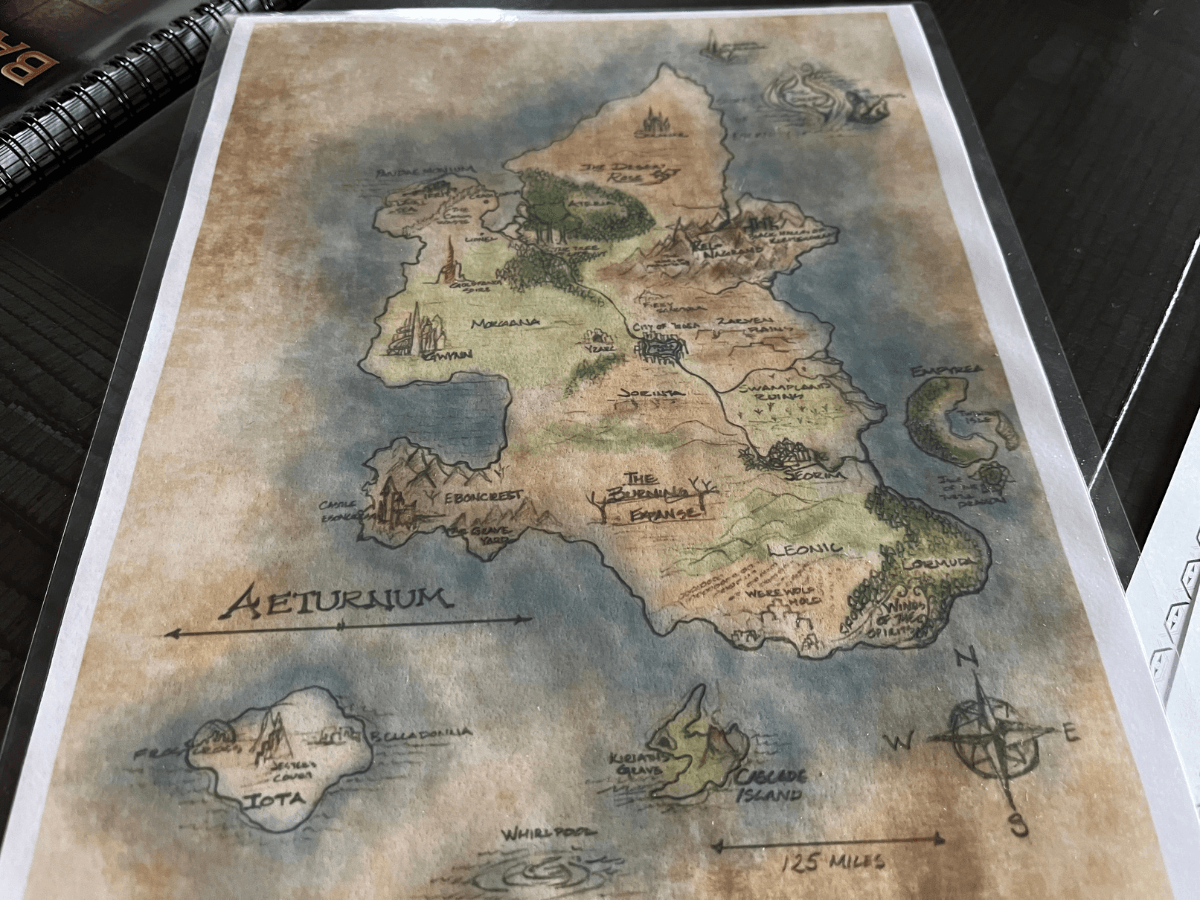
4. False Summit – War of the Bloodlines
The false summit of this campaign should last quite a while - maybe 10 session or more, depending on the total length of your campaign. During this time, players can be involved in helping forge political alliances, or break them. War breaks out. Rare individuals begin searching for solutions to this conundrum, amidst the burning landscape.
The Bloodlines of Power are very strong beings, and their warriors are strong, but they have far fewer warriors than the army of each mortal kingdom around them. Nonetheless, large battles break out across the land, changing the way life unfolds for average people.
During the wars, large-scale power and magic is utilized by each Bloodline of Power, which drastically changes the world (ideas of how are given, below). It isn’t easy for any side to gain an advantage, really, and the side that eventually does should be based on whatever political maneuvering the players either undertake, or based on your own choices as a dungeon master.
5. Example Bloodlines and their Effects
The actual Bloodlines present in your campaign should reflect the powers that your players select from their own racial bloodlines. Here are some broad faction ideas for you to implement in your game:
Beings of the Void: Voidling. Being a member of this bloodline gives your player the aberration creature type. They also cast dispel magic as a unique racial power and gain the Void Strike spell as an innate power.
The Bloodline of the Void summons portals into the void during battles. These portals allow more void creatures to enter the battle on his side, and tears holes in the fabric of the world, devastating the landscape.
Celestials: Angel. Being a member of this bloodline could gives your player a Protective Aura for all allies. They also cast dispel magic as a unique racial power and gain the Sacred Flame spell as an innate power.
The Bloodline of Celestials casts radiant light and fire magic during battles. The fire causes immense destruction. The radiant is simply too much for this plane of existence, creating pockets of never-ending light where neither shadows nor nightfall can ever appear.
Fey: Fairy. Being a member of this bloodline gives your player access to the Fey Passage ability. They also cast dispel magic as a unique racial power and gain the Summon Fey spell as an innate power.
The Bloodline of Fey uses druidic and witch-like magic during battles. If possible, however, they prefer to rely on trickery and subterfuge rather than taking direct fights. Wherever Fey go, they seek to change the landscape to their bidding. Fey lands become dense with foliage and thorns, and are impossible to navigate without magic.
6. More Rising Action – Defending the Mortal Realm and Entering into the Elements
The longer the war goes, the more of the world gets destroyed. Then, the more poverty, famine, sickness, and otherwise terrible living situations abound. Somehow, the Bloodlines of Power must be stopped. Most likely, though - at least at this time - the party is not strong enough to directly confront the demi-gods. However, solutions begin to present themselves:
- The Bloodlines of Power emerge in this location every 1,000 years, but only last for 10 years before they are again banished from this realm, by an ancient spell.
- The Bloodlines emerged by means of divine artifacts that call them each forth. These artifacts are the Bloodlines' connection to this world, and can be broken.
- If an artifact is broken while the Bloodline is present in the world, they can no longer be banished at the end of 10 years. Conversely, if an artifact is broken while the Bloodline is banished, they can never return to the world.
- The locations of each artifact are extraordinarily difficult to find, as each Bloodline seeks to keep theirs hidden.
- If one of the Bloodlines of Power manages to gain absolute dominance over the other Bloodlines during their time in the world, then they will not be banished with the others, and will rule for 990 years.
- A Bloodline “gains dominance” over the other Bloodlines by acquiring the artifact which belongs to that other Bloodline.
Destroying artifacts isn't really an option since doing so while the Bloodline is present in the world will prevent them from ever being banished. Thus, finding the artifacts isn't a direct means to victory. However, the players could attempt to gather artifacts on behalf of one Bloodline that they wanted to be victorious. Alternatively, they could gather artifacts and use them as bargaining chips with the Bloodlines for some other form of negotiation. Of course, Bloodlines of Power want to keep their respective artifacts safe, so acquiring them often involves going through elaborate quests to discover where they’re hidden, followed by difficult dungeons to actually gain them.
If nothing else, gaining artifacts could buy the party time to grow in strength so that they could someday kill Bloodlines of Power in direct combat. Such a thing is definitely possible, after all.
7. A Possible Route to Peace
Instead of going after artifacts, you could alternatively introduce an elder to the group who acts as a kind of mentor. Through their adventures, the party comes across this rare individual, who has acquired powers from not one, but from all Bloodlines. Furthermore, he can pass on those powers to the entire party.
He tells the party that he believes the various Bloodlines of Power could come to peace. The Bloodlines have always been at war, and so are fighting only because they have always fought. They played games at negotiation before the war started, but never attempted to find a real solution. However, he thinks that with your newfound powers, all of you could set out to unify the Bloodlines and end the war for all time.
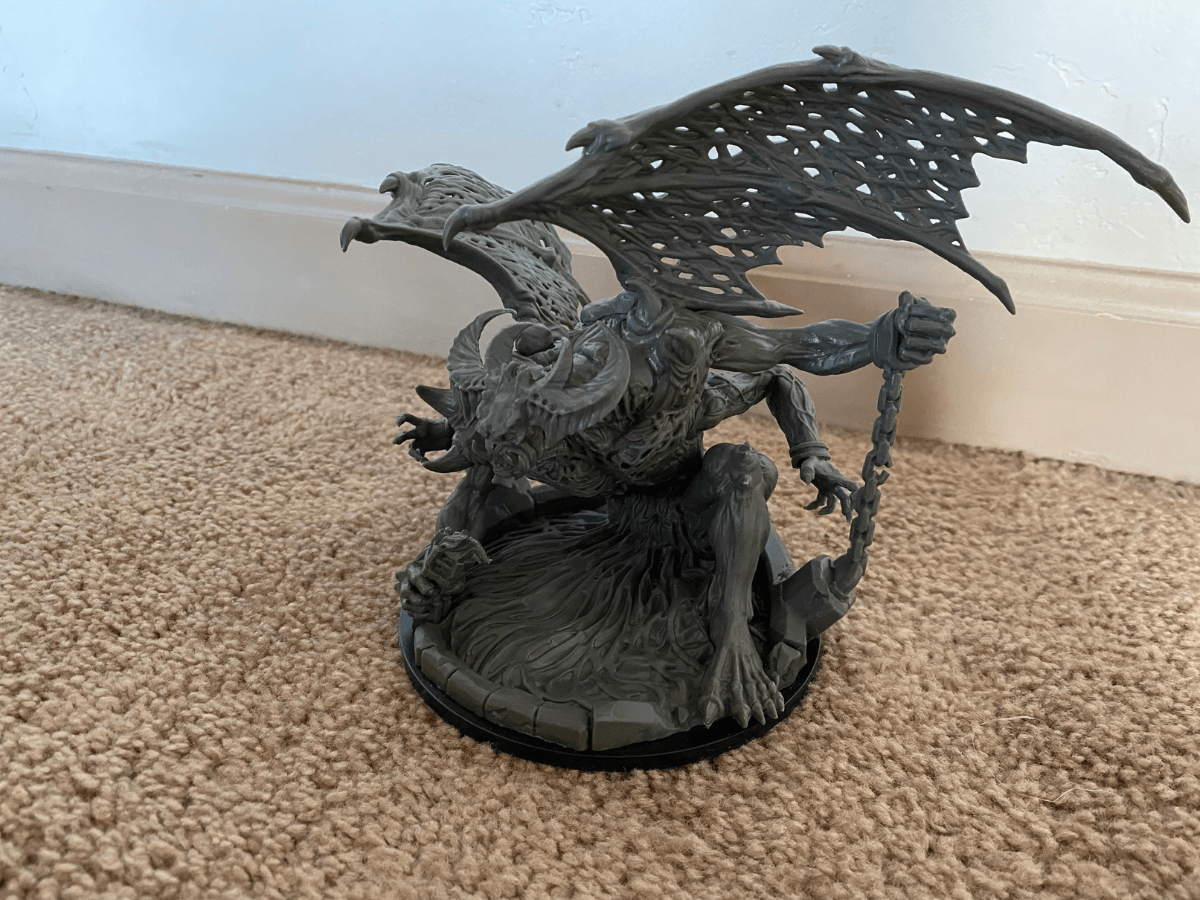
This picture doesn't do this "end boss" mini justice, but it is incredibly detailed, and gigantic. Perfect for an end-of-campaign battle to make the stakes seem as high as possible.
8. Climax – An End to 1,000 Year Cycles
As with all long campaigns, I like to leave the end sort of ambiguous as to what exactly happens. The point is that in a complex situation, there are often multiple ways things could turn out.
- The players could collect all of the artifacts and give them to one Bloodline who then dominates the others for the next 1,000-year cycle.
- The players could collect the artifacts and use them to negotiate peace with the Bloodlines.
- Perhaps some powerful wizard (in the party even?) learns to control the same spell that originally banished the Bloodlines into the crystals. You could then perhaps banish them again.
- Unify the Bloodlines through talks of peace.
- Decide that killing the Bloodlines, after gaining a lot of levels, is the only way.
- Anything else you come up with.
9. Finale of the Bloodlines' Power
I find that most gaming groups opt for death of the Bloodlines, no matter what it takes to make that a possibility. If the players gain a mentor who can teach them the ways of all Bloodlines, perhaps they can avoid his message of peace, and instead use the powers to go after the crystals and demi-gods. Whatever you want, really.
Whatever your group decides though, you should have some finale to the campaign that involves directly facing off with at least one of the Bloodlines. The most fun one to face would naturally be a Bloodlines that the party originally chose for their own racial powers and innate spells/ abilities. That way, there’s a strong sense of conclusion to the story when that Bloodline is slain, or at least persuaded into giving up their murderous onslaught.
There’s also plenty that can be done with the artifacts and banishment. It can be satisfying to banish great beings, with the ominous thought that in another 1,000-years, they’ll simply return. A little bitter-sweet end for the story, perhaps.
10. Finishing the Campaign
In this campaign, the world is left as a shadow of its former self. However, it could be interesting if even when the Bloodlines disappear, the people who formerly served them retained their innate powers. Even more so, what if those most loyal servants attempted to:
- Resummon their masters – if they were banished
- Avenge the Bloodlines – if they were slain
- Carry on the great work of dominance – if the Bloodlines were persuaded away from war
An entire campaign could follow from what the world turns into with so many people left over with tremendous innate powers. Entire kingdoms could collapse, with others taking their place. The entire balance of power could shift for the good... or for the worse. It’s up to you and your group to decide the realm’s fate, either way.
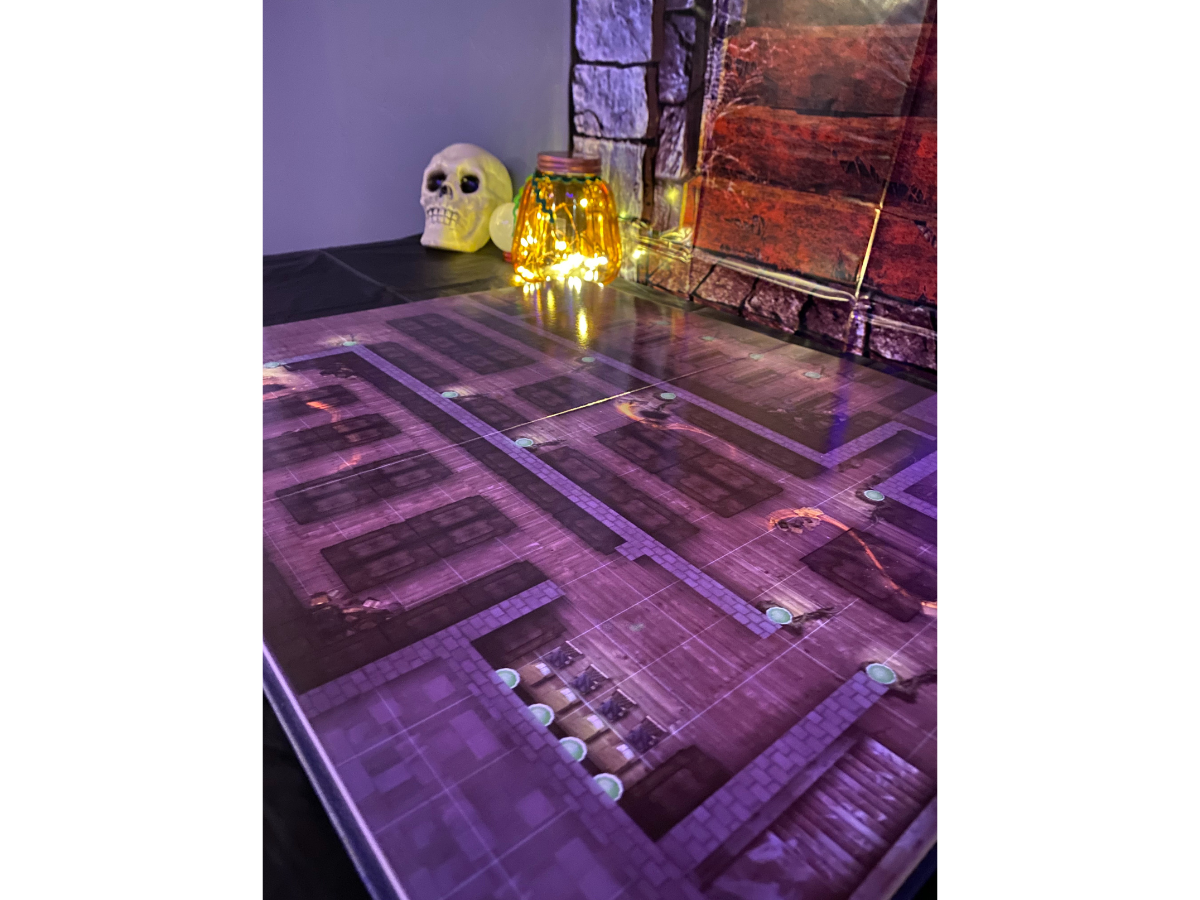
D&D Creative Campaign Ideas
To accompany the major D&D campaign ideas presented above, I’ve created a short list of D&D creative campaign ideas that are meant to supplement your existing game. This creative list is designed to help you approach your DnD sessions with a bit of new flavor that changes the fundamental way the campaign is played.
Also, f you're looking for other great ways to improve your overall gaming experience, as well, take a look at my Ultimate Dungeon Master Tools Guide. This guide provides all the basics for you to make the most of your game, from top to bottom. I also now have an entire guide on how to write a D&D campaign that you may find very useful, even if you plan to implement one of the campaign ideas I've listed, above.
D&D Campaign Ideas: Lords of the Realm
Have you ever considered that instead of roleplaying heroes in your campaign, your group could roleplay lords of the realm? They could send heroes out on missions, build their kingdom, create alliances, wage war, discover ancient magical secrets, and more. I often find that experienced DnD players love to mix up their usual style of RPG campaigns by throwing in something that’s still DnD, yet comes from a completely different angle.
D&D Campaign Ideas: A Lineage of Characters
If you like the idea of exploring a kingdom’s story, rather than just seeing things through one character, why not play an ongoing campaign where your group tells the story of an entire family’s lineage? In this 40-year-long D&D campaign, for example, the dungeon master had his players do exactly that.
If a player’s character dies, it’s really no problem – just pick up with someone else in the family tree. Similarly, if you’re looking to build a truly epic campaign, there’s nothing quite like creating a new character who comes from an incredible line of heroes. Talk about instant character connection and a sense of heightened drama.
DnD Campaign Ideas: Multiple Characters Per Player
It can also be really fun to start a campaign with the idea that each player is going to have a cast of characters. Not only do players feel like they get to explore many options that DnD presents (since it is a class based RPG), but they also feel that their characters are more expendable – which of course, they are. In this type of campaign, I often find that players make riskier decisions, engage in more daring plots, and generally go out in brilliant flashes of fire.
If you’re looking for a creative D&D campaign idea to mix things up, multiple characters is an easy way to go that often produces fantastic results.
Dungeon a Day
Another great way to add some unique dimensions to your game is to check out my Dungeon a Day series. Dungeon a Day features a unique dungeon room every day (that we're running the event) where you can check out the Eternity TTRPG site to find a new, custom-built dungeon room. At the end of every month, the 30 or so rooms all complete a single dungeon level.
Try throwing in some of the Dungeon a Day dungeon levels or individual dungeon rooms as traps, battles, or encounters to your campaign. They're an especially great resource for whenever you need a quick supplemental encounter.
D&D Specific Spells & Topics
Finally, as an additional resource for you if you're planning to specifically play D&D 5th edition, it helps to have some strategy guides for yourself and your players at your fingertips when it comes to any length of campaign. Check out the following ideas to implement for these iconic D&D spells and topics in your next ongoing adventure:
- Bless 5e Strategy Guide
- Bonus Action 5e Strategy Guide
- Cause Fear 5e Strategy Guide
- Charm Person 5e Strategy Guide
- Cure Wounds 5e Strategy Guide
- Silence 5e Strategy Guide
Play a Campaign Where Everyone Helps Game Master
If you weren't aware, there are many tabletop Games like DnD available to play nowadays. When it comes to your next campaign, you may try playing a TTRPG campaign where every player helps game master. Instead of a single dungeon master, each person helps contribute to the game world, the storyline, the major plot points, villains, unique magic items, and more. You will be amazed at how creative your gaming group can be when it comes to world-building.
A lot of hardcore, long-time DMs are often worries that a GM-less game can ruin the experience. After all, what if one person decides to take the storyline in a terrible direction, or just keeps making lame jokes with all of their plot points, etc?
Well, what I've found is that so long as you have a kind of contract with the group that outlines campaign expectations (genre, overall game vibe, use of humor, what the campaign's going to be "about," etc.) then things often easily stay on track. It's more about the setup and preparations than it is the actual game.
If you want to get an idea of how a GM-less game works, take a look at the Eternity TTRPG shop. My tabletop RPG is made for group game mastering, and provides all the tools you need to tap into your group's incredible creativity, while still keeping the game on track for entire campaigns.
Dice, Dungeons, Games & More - Eternity TTRPG
Share This Article

Author - Jacob Tegtman
Dear reader, I hope you enjoyed this article. Tabletop gaming has been a passion of mine since I was 6 years old. I've played just about every game from Dungeons and Dragons to video games like Final Fantasy. These games have inspired me, made me laugh, made me cry, and brought me endless hours of enjoyment.
I started Eternity TTRPG - and the indie tabletop game that goes along with it (Eternity Shop) - to share my love of gaming with others. I believe that in our technology-driven age, tabletop games help bring a sense of magic and community back into our world.
If you love the site, please share it with others! I have lots of gaming-related material for you to peruse and use in your own gaming sessions. If you have any questions about the site or want to contribute, just send me a message using the "Contact" page, which you can find in the site's footer.
